












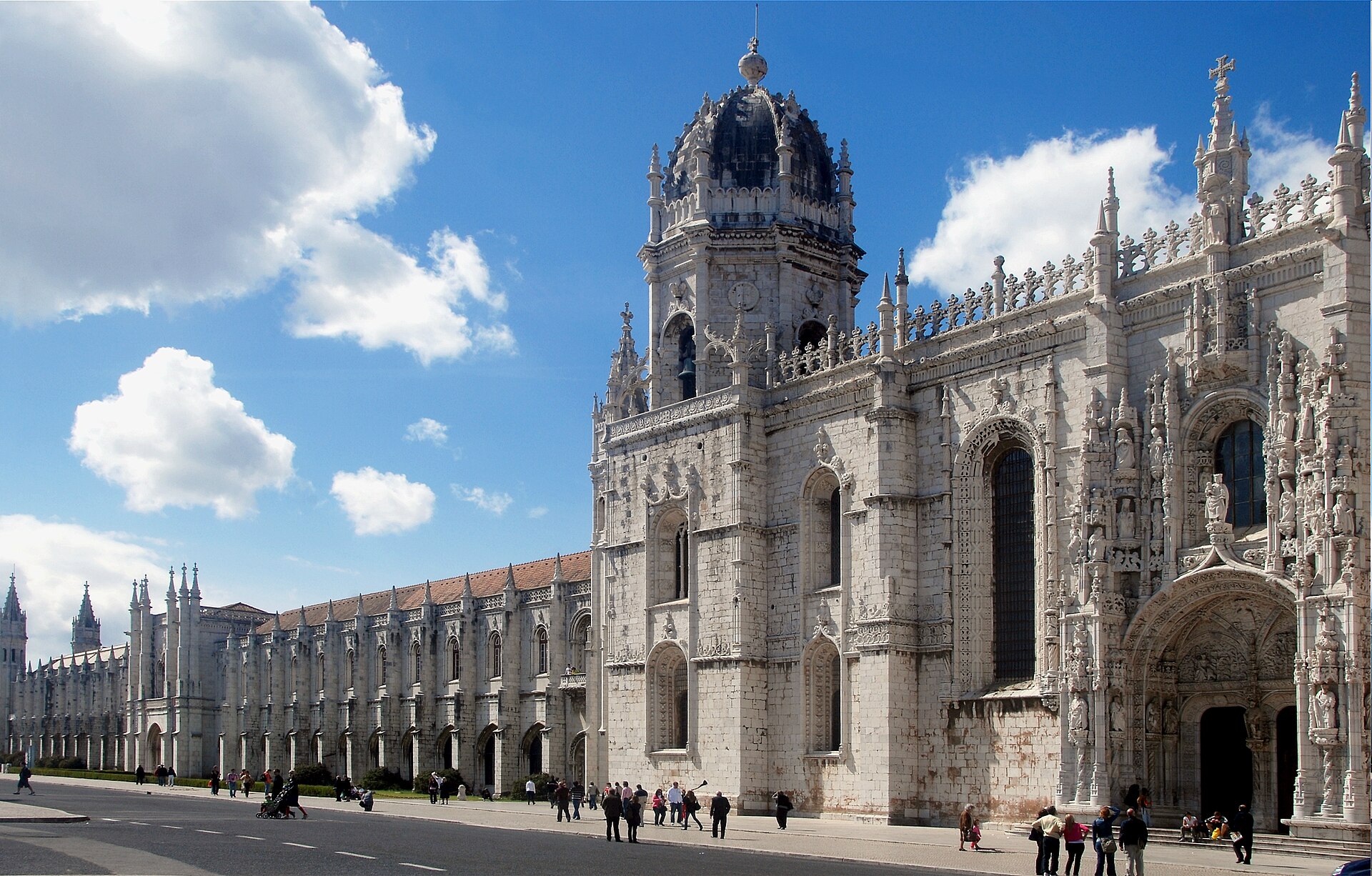







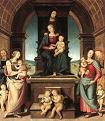




1500 World pop: 425M-540M; Peru: 10M; Dresden: 2,565; after the 1453 fall of Constantinople, Venice has 4K Greek immigrants, making it "another Byzantium" (Johannes Bessarion). 20K+ die of the plague this year and last in London. The Norse pop. of Greenland disappears by this year. The English Era of Expansion begins (ends 1648) as surplus agriculture begins in England, causing it to climb out of famine and launch frontier settlement throughout the world. According to Am. historian Norman Frank Cantor (1929-2004), this year marks the end of the Medieval Era or Middle Ages; "A high and strong culture is declining, but at the same time and in the same sphere new things are being born. The tide is turning, the tone of life is about to change" (Johan Huizinga); Europe begins to be run by bureaucratic monarchies. Between this year and 1800 Europe is at war 270 years out of 300? By now Spanish gold mines are producing $1M worth of gold annually; as treasure pours into Spain, however, prices rise. It takes until the year 1750 for the human technical knowledge in this year to double, according to French economist Georges Anderla (1921-2005); last in 1 C.E. On Jan. 26 Brazil (named after brazilwood, which produces a valuable red dye) is discovered by Spanish sailor Vicente Yanez Pinzon (1461-1513) in a 4-ship fleet at Cape Santo Agostinho (Cabo Santa Maria de la Consolacion) near Cape Sao Roque; his four ships then turn NW and discover the estuary of the Amazon River 4 mo. later, mistaking it for the Ganges River and naming it Rio Santa Maria de la Mar Dulce; Pinzon then sails between Trinidad and the mainland and reaches the Gulf of Paria in Venezuela on May 1, then turns N, passes the Windward and Leeward Islands to the W, followed by Puerto Rico and Hispaniola to the N, then NW through the Bahamas, where he loses two ships, then returns to Palos in Sept.; meanwhile on Apr. 22 (24?) after leaving Lisbon on Mar. 9 with 13 ships and 1K crew on a royal trade expedition to India along Vasco da Gama's route along the Cape of Good Hope, Portuguese sailor Pedro Alvares (Álvares) de Cabral (1467-1526), lands in Brazil, claiming it for his king under the name Island of the True Cross; his shipmate Diogo Dias dances on the beach to the pipes of the Tupiniquim, easing their fears; Cabral sails for India after leaving a small force there; after losing half his fleet in a storm, he reaches SW India and founds the first Euro settlement his co-capt. Pero (Pedro) Vaz de Caminha (1450-1500) writes to the king of Portugal about newly-discovered Brazil that "The best fruit that can be taken from it... will be saving its people" (by Christianizing them); in 1503 Fort Kochi (Emmanuel) is built, and ruled by Portugal unti l663. On Feb. 17 the Battle of Hemmingstedt in Schleswig-Holstein sees the peasant republic of Dithmarschen defend itself against the Black Guard of King John (Hans) of Denmark by flooding the dikes. In summer Portuguese explorer Gaspar Corte-Real (1448?-1502) leaves Lisbon, and discovers Newfoundland ("Terra Verde"), visiting varous points between Labrador and the Bay of Fundy; in May 1501 he returns to Newfoundland, charts about 600 mi. of the Labrador coast, then disappears mysteriously at sea in 1502 after sending back two of his vessels; in 1503 King Manuel I sends another expedition to learn his fate, but they return after finding nothing, causing him to forget the idea of a Northwest Passage and concentrate on India; an archeologist later discovers evidence that he reached Mass. and lived until the year 1511 - lost and found land? After Polish prince Alexander Jagiellon (1461-1506) of Lithuania tries to force a number of Orthodox nobles to convert to Roman Catholicism incl. his wife Elena (Ivan III's daughter), Ivan III invades the Lithuanian borderlands again, taking Toropets and Dorogobuzh, and starting the Second Russian-Lithuanian War (ends 1503); on July 14 after the Russians fail to take Smolensk, the Battle of Vedrosha on the Vedrosha River 30 mi. W of Kaluga sees 40K Russians under Prince Daniil Vasiliyevich Shchenya (-1519) defeat 40K Polish-Lithuanian forces under hetman (since 1497) Konstanty Iwanowicz Ostrogski (1460-1530), killing 8K and taking many POWs, incl. Ostrogski, who escapes after three years; the Russians conquer Bryansk and turn it into a fortress. On July 15 (10:00 p.m.) Don Alfonso of Aragon (b. 1481), happy 2nd husband of 6-mo. happy pregnant Lucrezia Borgia is nearly assassinated on the steps of St. Peter's in Rome by 40 assassins on horseback, and even though she tries to rescue him and put him under guard, and either he or she sends men who shoot arrows at her brother Cesare Borgia (who is jealous of his beauty, while he suffers from pockmarks from syphilis, and wants the bum knocked off since his original plans to use him to marry somebody else fell through), he sends his henchman Don Micheletto to trick them to go into an adjoining room before strangling him; after she has son Rodolfo and mourns his loss they exile her to Nepi to shut her up. On July 19 Isabella I's son Dom Miguel da Paz (b. 1498), heir to Spain and Portugal dies, leaving her daughter Juana (Joanna) the Mad and her hubby Philip I the Handsome as heirs to Spain. On Aug. 10 (St. Lawrence's Day) Portuguese explorer Diogo Dias becomes the first Euro to sight Madagascar, naming it Sao Lourenco, connecting it with the Arabic Island of the Moon reported in 1490 by Portuguese explorer Pero (Pedro) da Covilha (Pêro da Covilhã) (1460-1527). In Aug. the Battle of Modon (Second Battle of Lepanto) is another V for the Ottoman fleet under adm. Kemal Reis, who bombards the Venetian fortress of Modon (Methoni) in W Peloponnese (held since 1125) (until 1686) and captures the town, after which he engages the Venetian fleet off the coast of Coron (Koroni) on the Gulf of Messina in the SW Peloponnese (the 2nd "eye of the republic of Venice" along with Modon) and captures the town (until 1686) along with a Venetian cmdr., leaving no stops for Venetian ships sailing to the Levant; he then sails across to Sapienza Island and sinks the Venetian galley Lezza; in Sept. he assaults Voiussa, and in Oct. he takes on Cape Santa Maria on Lefkada Island before returning to Constantinople a happy camper in Nov., after which Turkish cavalry is called in, reaching N Italy itself by 1503. On Sept. 12 Duke Albert the Bold (b. 1443) dies, and his eldest son George the Bearded (1471-1539) becomes duke of Saxony, becoming known for his excellent education and for remaining Catholic even though his younger brother Henry IV the Pious goes Protestant. On Sept. 15 John Morton (b. 1420) dies, and Winchester bishop (since 1493) Thomas Langton (-1501) is elected to succeed him as archbishop of Canterbury, but he dies next Jan. 27 before his election is confirmed, and Salisbury bishop (since 1500) Henry Deane (1440-1503) is elected next Apr. 26, becoming the first monk to become archbishop of Canterbury (until ?). In Sept. Amerigo Vespucci returns to Spain. On Oct. 21 emperor (since 1464) Go-Tsuchimikado (b. 1442) dies, and on Nov. 19 his eldest son Go-Kashiwabara (1464-1526) (personal name Katsuhito) becomes Japanese emperor #104 (until May 19, 1526), going on to scrape the bottom as far as imperial authority vis a vis the shogun. In Oct. Christopher Columbus is arrested in Hispaniola by gov. Francisco de Bobadilla for injustice to the Indians, and sent home to Spain in chains for rehabilitation; now that he's gone, Bobadilla is as cruel or even crueller to them? On Nov. 11 the secret Treaty of Granada is signed between Louis XII and Ferdinand II of Aragon partitioning the kingdom of Naples between them, and making Louis XII king of Naples, the Terra de Lavoro, and the Abruzzi, while Ferdinand becomes grand duke of Puglia and Calabria. On Nov. 16 after eight Franciscan friars arrive in India from Lisbon (the first Roman Catholic missionaries in India), three of them are massacred in Calcutta (Kolkata), and the remainder move to Muslim Cochin on the Malabar (W) coast, arriving on Dec. 24 under cmdr. Pedro Alvares Cabral; the ruler of Cochin is Unniraman Koyikal I (d. 1503); big surprise, since the Diaspora of the 1st-2nd cents., Cochin has been a safe haven for the coochie-coo Jews. Duke Ludovico Sforza the Moor recovers Milan from the French, but 2 mo. later they reconquer it, capture Sforza, and imprison him in France, where he dies in prison in 1508; the Sforza Dynasty of Milan (founded 1450) ends; the poor duchy of Savoy now lies between the French possessions of Milan and Naples. The Tartars stage two large attacks on Poland. Muhammad Shaybani Khan (1451-1510), a descendant of Genghis Khan leads the Uzbeks against the Timurids, capturing Samarkand and taking over Transoxiana (Turan), once (1447) ruled by Ulugh Beg from the Timurids, founding the Shaybani Dynasty (ends 1510). The Diet of Augsburg establishes the 20-member Council of Regency (Reichsregiment) for administering the Holy Roman Empire, and divides Germany into six "circles"; German king Maximilian I doesn't like it, and dissolves it in 1502, and after HRE Charles V revives it in 1521 in weakened form it ends up being dissolved in 1531, ending any chance for the HRE to become a unified nat. state. Emanuel (Manuel) I of Portugal marries Maria, Infanta of Spain. Leonardo da Vinci joins up with Cesare Borgia as a military engineer and cartographer, making him many maps using modern surveying methods, incl. one of the first making reference to America; by spring Borgia is defeated, and Leonardo returns to Florence, reduced to the role of a mere artist again; Cesare Borgia leads another expedition which conquers Romagna, Italy. Niccolo Machiavelli is sent by Florence to France to deal with the French king. Pope Alexander VI proclaims a Year of Jubilee, and preaches a Crusade against the Turks, imposing a tithe to pay for it; meanwhile German monk Martin Luther (1483-1546) issues a great proto-Protestant soundbyte: "I persuade myself verily, that the Day of Judgment will not be absent full three hundred years. God will not, cannot, suffer this world much longer... The Great Day is drawing near in which the kingdom of abominations shall be overthrown." In this cent. Archangel in Russia begins an extensive trade with England and Holland, causing the town of Vologda 290 mi. NNE of Moscow to become a commercial center until the founding of St. Petersburg in 1703. In this cent. the Russian Cossacks settle the lower Don River, setting up the Territory of the Don Cossacks, ruled by the khan of the Crimea. In this cent. the Islamic kingdoms of Buayan and Magindanao on Mindanao in the S Philippines are founded. In this cent. Muslim Dyula-speaking Africans begin migrating from the declining Mali Empire into NE Ivory Coast, founding the city of Bego, later the city of Kong, displacing the animist native pop. In this cent. Spanish settlers from Castile begin planting Listan (Listán) Prieto (negro) ("Listan" = "Palomino") grapes in the Canary Ialdns, which are later brought to the Spanish colonies in Peru, and in Calif. in the late 18th cent. by Franciscan missionaries, where they become known as Mission grapes. In this dangerous cent. nice safe Vanitas (Lat. "emptiness") still life paintings become popular in Flanders and the Netherlands (until the late 17th cent.), portraying the vanity of earthly life. In this cent. the word "doctor" (Lat. "docere" = to teach) gains a medical connotation; late in the cent. the word "nurse" (Lat. "nutrire" = to suckle) gains the meaning of someone who looks after the infirm (Lat. "infirmus" = weak") rather than just a wet-nurse. In this cent. unusual numbers of women get into positions of rulership. In this cent. the Warburg Family of German Jews is founded by Simon von Cassel (d. 1566), who takes his surname from the city of Warburg; they continue to modern times. In this cent. the Jesuit School of Salamanca in Spain develops economic theory to a high level, only to be forgotten until the 20th cent., when their similarity to the Austrian School of Economics turns on Joseph Alois Schumpeter in his "History of Economic Analysis" (1954). In this cent. sailors from Genoa, Italy begin wearing denim, causing the word "jeans" to be coined; they get the stuff from Nimes, hence "serge di Nimes"? By this time German becomes the written language of the educated classes in Germany, and after Luther's 1522 pub. of the German trans. of the Bible, German spreads from midland Germany to the masses via public readings. In this cent. hereditary serfdom is reestablished in Poland, Russia, and Prussia. The Italian Renaissance begins to spread to England. The cuisine of Florence becomes #1 in Europe, causing Paris to adopt it and create French cuisine; Marco Polo brings a noodle dish from China that the Italians turn into pasta; Jewish immigrants from Catholic Spain bring the original pizza to Italy. A renaissance in painting begins in the Netherlands and Germany, with Albrecht Durer more than keeping up with his Italian rivals. In this cent. coffee (kahve) reaches Persia from Arabia; after being studied by physicians until they pass it, it spreads throughout the country in rocking chess-playing coffeehouses, displacing tea as the most popular beverage until around 1800. In this cent. the Lake Chad area of Africa is split among the rival kingdom of Kanem-Bornu (ends 1900) and the sultanate of Bagirmi (Baghermi) (1522-1897). Jews begin to borrow secular names (don't say Christian names) from Europeans. During the reign of Henry VII high class English women begin to wear a profusion of hair with heavy side locks; during the reign of Henry VIII men begin to part their hair in the center and comb it straight down the sides. The Neshnabek (True People, later the Potawatomi) migrate from the land N of Lakes Superior and Huron to an area along the E shore of Lake Michigan. The Venetian Art Style begins to diverge from that of Florence and Rome. The Galliard lively sexy French dance for two dancers in triple time filled with leaps, jumps, and hops becomes popular this cent. and next, and a favorite of Queen Elizabeth I of England. In this cent. the Cairn Terrier is bred to flush and kill rats in manmade cairns in the Scottish Highlands. In this cent. the Norman village of Creton begins producing Cretonne, heavy unglazed printed cotton or linen cloth, used for curtains. The High Gothic period in German art (begun 1250) ends, and the High Renaissance period in European art begins (ends 1525). The first regular postal route between Vienna and Brussels opens. Silver guilders are introduced in Germany (and Austria until 1892). The U. of Valencia in Spain is founded. In this cent. Islam is introduced to Maluku (E Indonesia), starting with the sultans, then their familes and kin-based settlements, and reaching the entire pop. by the next cent. In this cent. the steel Rapier (from Sp. "espada ropera" = sword for wearing with clothing) becomes a status symbol in Spain, to be worn at all times; the best are made in Toledo. This year incunables (incunabula), books made from woodblocks with moveable type that imitate manuscripts are discontinued; since the invention of printing, over 1K printing offices have turned out approx. 10M books under 35K titles. In this cent. the first commercial colleges are founded in Venice. About this year the English word "fuck" first appears in a satirical poem aimed at the Carmelite friars of Cambridge U. About this time Italians coin the term "influenza" for diseases attributed to the influence of the stars. In this cent. the Scots begin making whiskey from malted barley. In this cent. it becomes a custom to attach satirical verses to the Pasquino, a classical statue in Rome. About this time the Polish Winged Hussars are first mentioned. In this decade the May Morris Dance (allegedly of Moorish origin), celebrating the Robin Hood story reaches its height of popularity. In this cent. the Poodle dog breed is developed in Germany - so why do they call it the French Poodle? In this cent. the Cittern, a cheap version of the lute with a flat rather than curved back (the guitar of its day) becomes a common barber shop instrument in England for customers to entertain each other; the top of the pegbox is often decorated with a small poorly-carved head, causing the reference to "cittern-heads" in Shakespeare's "Love's Labour Lost". Sports: Early in this cent. the first annual horse race is held in Chester, England near the Dee River. In this cent. the dance slash martial art form of Capoeira is developed in Brazil. Architecture: The Manueline Hieronymites (Jeronimos) (Jerónimos) Monastery near the Tagus River in Belem, Lisbon, Portugal is built near the launching point of Vasco da Gama's first journey, becoming the necropolis of the Portuguese Avis royal dynasty in the 16th cent. until it is secularized on Dec. 28, 1833. The Cathedral of Our Lady in Antwerp (begun 1352) is finished. King's College Chapel in Cambridge, Henry VII's Lady Chapel in Westminster (known for perfect fan vaulting) (last great architectural masterpiece of the Middle Ages?), and St. George's Chapel in Windsor are all built early in this cent., becoming the last gasp of English Gothic architecture. Ahu Akivi is built on Easter Island. Inventions: Early in this cent. the Spanish begin sailing Galleons, giant lumbering heavily-armed ships with three masts and 3-4 decks (a modification of the galley) used to transport gallons of treasure from South Am. (the Spanish Main) and other lands to home turf - click if you want to become a buccaneer? About this year Chinese inventor Wan Hu allegedly devises a flying chair using 47 rockets, which explodes, killing him, becoming the world's first astronaut; Wan-Hoo Crater on the Moon is later named after him. About this time the Chinese invent a rotary disk cutter for cutting jade. In this cent. the Yo-Yo is invented in the Philippine Islands; it weighs 4 lbs. and has a 20-ft. cord. In this cent. the Shirt is invented, and the word "buttonhole" coined. In this cent. black lead Graphite Pencils come into use in England. In this cent. modern copper-zinc brass comes into use, replacing the ancient copper-tin alloy. In this cent. the Spanish introduce the Musket (Sp. "little fly"), accurate to 400 yards, which replaces the arquebus; the slow reloading procedure necessitates the carrying of a pike for defense, which leads to the invention of the Bayonet. In this cent. Faience tin-glazed pottery with a pale buff body is first manufactured in Faenza in N Italy. In this cent. the Water Pipe (Bong) for smoking is introduced in Ming China. Science: The first Caesarian Section since Julius Caesar in 100 B.C.E. is carried out by pig gelder Jakob Nufer in Switzerland. Early in this cent. mercury starts to be used to treat syphilis. About this time Haast's Eagle, which grows up to 40 lb. and lives in the mountains of New Zealand becomes extinct; a predator, it might have preyed on humans? In this cent. (next cent.?) the elusive 10-ft.-tall 1K lb. Elephant Bird (Vouron Patra) (Aepyornis maximus) of Madagascar, the world's largest bird (with the world's largest egg) becomes extinct. A German engraving from about this time depicts a doctor wearing a mask with a birdlike beak containing perfume to protect against the Black Death. In this cent. the advent of the printing press causes the ranks of academics to be swamped with experimentalists looking to pub. more and more? Art: Anon., Globe of the World; engraved onto an ostrich egg, incl. the New World, showing North Am. as two tiny islands. Hieronymus Bosch (1450-1516), The Temptation of St. Anthony; The Ship of Fools - good title for the entire cent.? Sandro Botticelli (1445-1510), The Mystical Nativity; contains a message predicting the End of the World within three years based on predictions of Girolamo Savonarola. Vittore Carpaccio (1460-1526), Life of St. George (9 scenes) (1600-). Albrecht Durer (1471-1528), Self-Portrait; Lamentation for Christ (1500-3); Hans Durer (Dürer); The Great Passion (12 woodcuts). Gentile Bellini (1427-1507), Queen Caterina Cornaro. Il Giorgione (1478-1511), Doge Agostino Barbarigo (1420-1501). Michelangelo (1475-1564), The Entombment (1500-1) (unfinished); commissioned for the Church of Sant'Agostino in Rome; he gives the money back before returning to Florence. Il Perugino (1450-1523), Madonna and Child; Family of the Madonna (1500-2). Pinturicchio (1454-1513), Madonna Adoring the Child. Jean Poyet, The Massacre of the Innocents; illustration for the book "Hours of Henry VIII". Nonfiction: Anon., The Key of Solomon (Clavis Salomonis); a grimoire (magician's handbook). Hieronymus Brunschwig (1450-1512), Liber de Arti Distillandi (Das Buch der Rechten Kunst zu Distillieren); the first herbal and the first illustrations to depict chemical apparatus and operations. Juan de la Cosa, Map of the New World; earliest known map of the New World, by a shipmate of Christopher Columbus, who dedicates it to him, along with a vignette of St. Christopher carrying Infant Jesus on his shoulders. Desiderius Erasmus (1466-1536), Adagia (Paris); collection of 800 Latin and Greek proverbs stolen from his vast reading; he later blows it up to 3K proverbs and changes the title to "Adagiorum Chiliades" (The Thousand Proverbs), then runs it up to 4,658 by his death; many Euro "commonsense sayings" can be traced to this pub., incl. "One step at a time", "Make haste slowly", "Be in the same boat", "Lead by the nose", "From Heaven to Earth", "Weigh anchor", "Grind one's teeth", "Walk on tiptoe", "Even a child can see it", "Out of tune", "A point in time", "To call a spade a spade", "Give as good as one gets", "Can't live with women or without them", "Between a rock and a hard place", "Can't teach a dog new tricks", "Crocodile tears", "The bowels of the Earth", "Look a gift horse in the mouth", "Die laughing", "Break the ice", "Sleep on it", "Walk a tightrope", "Nowhere near the mark", "Complete the circle", "In the land of the blind the 1-eyed man is king". Plays: Anon., Mariken van Nieumeghen; Dutch miracle play about a woman selling her soul to the Devil; written about this time. Poetry: Francesco Berni (1497-1535), Burlesque Rhymes; invents the burlesque (It. "burla" = mocking jest) form in lit. Novels: Anon., Till Eulenspiegel (Lubeck); German Schwank book. Births: Spanish "Sun never sets" Hapsburg-Valois-Trastamara-Aragon king (1516-58) and HRE (1519-58) Charles V of Burgundy (d. 1558) on Feb. 24 in Prinsenhof Castle, Ghent, Flanders; son of Philip I the Handsome of Burgundy (1478-1506) and Juana the Mad of Castile (1479-1555); paternal grandson of HRE Maximilian I (1459-1519) and Mary of Burgundy (1457-82); maternal grandson of Ferdinand II the Catholic of Aragon (1452-1516) and Isabella I the Catholic of Castile (1451-1504); brother of HRE Ferdinand I (1503-64), Eleanor of Austria (1498-1558), Isabella of Austria (1501-26), Mary of Austria (1505-58), and Catherine of Austria (1507-78); father of Philip II (1527-98); cousin of Mary I of England; heir of four Euro royal houses, who becomes the top Hapsburg ever - fill it up with burgundy, mad Juana? English Roman Catholic (last) archbishop of Canterbury (1556-8) cardinal (1536-) Reginald Pole (d. 1558) on Mar. 12 in Stourton Castle, Staffordshire; son of Welsh knight Sir Richard Pole (1462-1505) and Margaret Pole, 8th countess of Salisbury (1473-1541), daughter of Edward IV 's and Richard III's brother George Plantagenet, 1st duke of Clarence (1447-78); maternal grandson of George Plantagenet, 1st duke of Clarence and Isabelle Neville, duchess of Clarence; educated at Magdalen College, Oxford U. German scholar Joachim Camerarius the Elder (d. 1574) on Apr. 12 in Bamberg; his family name is Leibhard, but his forebears were all called Kammermeister (chamberlain to the bishops of Bamberg). Italian duke of Mantua (1519-40) Federico II Gonzaga (d. 1540) on May 17 in Mantua; son of Francesco II Gonzaga (1466-1519) and Isabella d'Este (1474-1539); brother of Ferrante I Gonzaga (1507-57); created duke in 1530. Italian "Perseus and Medusa" goldsmith-sculptor Benvenuto Cellini (d. 1571) on Nov. 3 in Florence. Austrian Anabaptist leader Jacob (Jakob) Hutter (d. 1536) in Moos, St. Lorenzen, Pustertal. English Pilgrimage of Grace leader (atty.) Robert Aske (d. 1537) in Aughton (near Selby); 3rd cousin of Jane Seymour. Spanish conquistador Hernan Perez de (De) Quesada (d. 1544) in Granada, Castile. Portuguese naval cmdr.-explorer Joao (João) de Castro (d. 1548) in Lisbon. English poet-courtier Thomas Sternhold (d. 1549) in Blakeney, Glucesteshire; educated at Oxford U.; groom of the robes for Henry VII and Edward VI. Italian Mannerist artist Il Tribolo (Niccolo di Raffaeli di Niccolo dei Pericoli) (d. 1550) (b. 1507?) in Florence. English Protestant bishop Nicholas Ridley (d. 1555). Italian scientist Niccolo Tartaglia (Ital. "stammerer") (d. 1557). German painter-engraver Hans Burgkmair the Younger (d. 1559); son of Hans Burgmair the Elder (1473-1531). Spanish viceroy of Peru #5 (1556-61) Andres Hurdato de Mendoza y Cabrera, 3rd Marquis of Canete (Andrés Hurtado de Mendoza, 3rd Marquis of Cañete) (d. 1561) in Canete; descendant of Juan Hurtado de Mendoza, 1st marquis of Canete (-1490); father of Garcia Hurtado de Mendoza, 5th marquis of Canete (1535-1609). German painter Christoph Amberger (d. 1562); disciple of Hans Holbein. English bishop of London (1539-58) Edmund "Bloody" Bonner (Boner) (d. 1569); educated at Oxford U. Italian "Eustachian tube" anatomist Bartolommeo (Bartolomeo) Eustachio (Eustachius) (Lat. "giving fruit") (d. 1574) in San Severino (near Macerata). Italian Renaissance chef (to Pope Pius IV and Pope Pius V) Bartolomeo Scappi (d. 1577) in Dumenza, Lombardy. Deaths: Scottish poet Robert Henryson (b. 1420). English archbishop of Canterbury (1486-1500) Cardinal John Morton (b. 1420) on Sept. 15 in Knole, Kent. English bishop John Alcock (b. 1430) on Oct. 1 in Wisbeach Castle. Japanese emperor #103 (1464-1500) Go-Tsuchimikado (b. 1442) on Oct. 21. German duke Albert of Saxony (b. 1443) on Sept. 12 in Emden; buried in Meissen. Italian philosopher Lodovico Lazzarelli (b. 1447) on June 23. Portguese explorer Bartholomeu Dias (b. 1450) on May 29. Italian prince Alfonso of Aragon (b. 1481) in July in Rome (murdered). Portuguese infante Miguel da Paz (b. 1498) on July 19 in Granada.




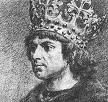
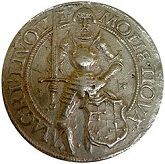



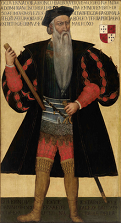

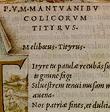

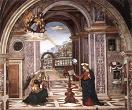


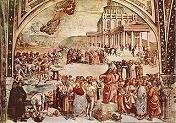

1501 In Mar. after Rodrigo de Bastidas reaches Venezuela, then Colombia, he discovers the Magdalena River, finally exploring the whole coastline from Cape de Vela to the Gulf of Darien, incl. the coast of Panama. In Apr. the Moorish revolt in Grenada (begun Dec. 1499) is quashed. In May Gaspar Corte de Real (b. 1450) returns to Newfoundland, then disappears mysteriously after sending back two of his vessels - lost and found land? On May 14 Italian explorer Amerigo Vespucci (1454-1512) leaves Lisbon and sails along the coast of South Am., spreading joy to the natives, and convincing himself that this isn't Asia but a vast unexplored new continent, which he calls Mondus Novus (the New World). On June 1 Pope Alexander VI issues a bull instituting religious censorship of all printed books. On June 17 king (since 1492) Jan I Olbracht (b. 1459) dies, and in Dec. his brother Alexander I Jagiello (1461-1506) becomes king of Poland (until 1506), signing a truce with Bajazet II. On Aug. 9 the Danish-Swedish War begins (ends 1512) as King Hans of Denmark-Norway-Sweden receives a letter of succession from the Swedish nobles, and they siege queen consort (since Oct. 6, 1497) Christine (Christina) (1461-1521) in her castle in Stockholm (until 1502). On Aug. 29 after skillful use of heavy cavalry and artillery fire, the Battle of the Siritsa (Seritsa) River 6 mi. S of Izborsk is a V for 12K troops (8K infantry, 4K cavalry) of the Livonian Order under grandmaster (since 1494) Wolter von Plettenberg (1450-1535) over 40K toops of the grand duchy of Moscow under Vasily Nemoy Shuysky and the Pskov Repub. under Danil Shchenya. On Sept. 1 Lucrezia Borgia marries her 3rd hubby (his 2nd wife) Alfonso I d'Este (1476-1534), son and heir to Duke Ercole I d'Este of Ferrara (d. 1505), a great art patron who finds her repugnant; when the duke dies in 1505, she and her husband take over Ferrara, establishing a court which becomes known for its artists, writers and scholars, while his army becomes known for its top-of-the-line artillery, which he is so proud of he poses for portraits with his arm over a cannon's mouth; meanwhile the accusations of intrigues, murders, and deviltry fly, starting with having his brother Ferrante and half-brother Giulio convicted in Sept. 1506 of treason and put on the gallows, after which their sentence is commuted to life in priz in the Torre dei Leono, after which Ferrante dies after 34 years, and Giulio is pardoned in 1559 after 53 years, being laughed at in the streets for his outdated clothes. Louis XII of France, in alliance with Ferdinand II the Catholic of Aragon conquers Naples; after the French enter Rome, Pope Alexander VI declares Louis XII king of Naples; the Peace of Trent in N Italy between France and HRE Maximilian I recognizes France's conquests in Upper Italy. On Oct. 30 Cesare Borgia (illegitimate son of Pope Alexander VI) allegedly holds the Ballet (Banquet) of the Chestnuts in the Palazzo Apostolico, featuring an orgy with 50 "honest prostitutes", who crawl naked on a floor strewn with you know what. The Medici Dynasty (House of Medici) in Florence is overthrown by a popular uprising, which declares the First Florentine Repub. (ends 1512); cousins (raised as brothers) Giovanni Medici and Giuliano Medici flee for Rome to plot a return. Spanish scholar (chaplain to Ferdinand II and Isabella I) Peter Martyr D'Anghiera (1457-1526) is sent to Egypt to dissuade the sultan from taking vengeance on the Christians in Egypt and Palestine for the defeat of the Moors in Spain. 16-y.-o. Catherine of Aragon (1485-1536), youngest surviving child of Ferdinand II and Isabella I of Spain makes a perilous journey to England to marry 14-y.-o. prince Arthur Tudor (1486-1502), son of Henry VII; Arthur's 10-y.-o. brother Prince Henry Tudor (later Henry VIII) is her escort; 4 mo. later Arthur dies of "sweating sickness", and Prince Henry is put at the head of the line for both the crown and her hand - lucky young Anakin Skywalker? Schaffhausen W of Lake Constance (northernmost canton) joins the Swiss Confederation, along with East Basel (West Basel in 1579). Circassian Al-Ashraf Kansawh al-Ghawri (Qansuh al-Ghauri) (1441-1516) becomes the next-to-last sultan of the Mamluk Empire (until Aug. 24, 1516), going on to complain to the pope about the Portuguese navy rounding the Cape of Good Hope and entering the Indian Ocea and Red Sea, and builds a fleet to take them on. Shiite cmdr. Ismail of Ardabil, leader of the Twelver Shia militant Safaviyya order and his army of 7K Shiite Qizilbash Red Heads defeat an army of 30K Sunnis under the leader of the White Sheep (Aq-Qoyunlu) Turk dynasty under Alwand Mirza at the Battle of Shurer in Azerbaijan, and captures their capital of Tabriz; Ismail proclaims himself shah Ismail I (1487-1524) (until May 23, 1524), founding the Turkish-based Shiite Persian Safavid (Safawod) Dynasty (ends 1722, then 1729-36), which converts Iran to Shia Islam after importing religious authorities from the Levant, becoming a rival to the Sunni Ottoman Empire and pissing them off by suppressing Sunni subjects and sending missionaries into Anatolia to stir up the Turkomans; the Safavid Dynasty goes on to expand Persian rule to all of Iran, Azerbaijan, Armenia, most of Georgia, the North Caucasus, Iraq, Kuwait, and Afghanistan, and parts of modern-day Syria, Turkey, Pakistan, Uzbekistan, and Turmenistan, reestablishing Persia as an economic stronghold between the East and the West, with an efficient state bureaucracy that patronizes fine arts and architecture; Ismail I becomes a prolific poet under the alias Khatai (Pers. "sinner"), establishing Azerbaijani as a lit. language. That's one small step for Africans, one giant leap for Europeans? The Spanish (Castilian) crown authorizes the African slave trade under its monopoly, giving permission to Flemish, German, Dutch, Genoan, and Portuguese merchants to engage in it; next year the first African slaves in America arrive in the Spanish colony of Santo Domingo (modern-day Dominican Repub.), ordered by newly-appointed Hispaniola gov. (1502-9) Nicolas de Ovando y Caceres (Nicolás de Ovando y Cáceres) (1460-1518); by 1503 there are so many that Ovando asks that the flow be stopped; at first they only accept Africans instructed in the Christian faith, prohibiting those from Muslim Moorish backgrounds - let's go round up some loose what? The seaport of Durazzo in Albania is captured by the Turks (until 1913). Philibert II the Handsome of Savoy does it and marries Margaret of Austria, only daughter of HRE Maximilian I and Mary of Burgundy; too bad, handsome or not, he shoots blanks and leaves, er, dies childless in 1504. Portuguese explorer Joao de Nova (1460-1509) discovers Ascension Island off the W coast of Africa; too bad, he fails to report it, causing fellow Portugese explorer Alfonso de Albuqurque (1453-1515) to rediscover it in 1503 on Ascension Day (40th day of Easter) and name it; otherwise barren, it is a good place to hunt egg-laying green turtles. After Columbus brings sugar cane plantings, Hispaniola has its first sugar cane harvest. The U. of Santiago in Spain is founded. Michelangelo leaves Rome and returns to Florence (until 1505). It's a phenomenon known as deja vu? Pope Alexander VI creates his son Cesare Borgia as duke of Romagna, who seizes the principality of Piombino, fails to acquire Bologna and Florence, then takes Camerino and the duchy of Urbino. Il Sodoma (1477-1549) of Lombardy moves to Siena, Italy (after studying with Leonardo da Vinci?), founding the High Renaissance Sienese School of Painting with Pinturicchio. The Devil's Armor is hung in the village church of Santa Reparata S of Florence after a young man wearing it allegedly takes the name of the Virgin in vain as he passes by and could not take the armor off until he received her forgiveness, later donating it as a thanksgiving gift; in 1942 an artillery shell bursts in the church, making marks on it :) - Edward Harris, Hannibal (1999). Inventions: Space-saving Italic Script (Chancery Cursive) is first used in an Italian ed. of Virgil, becoming the first octavo (pocket-sized) book. Nonfiction: Idris Bitlisi (-1520), Hesht Bihisht; a history of the first eight Ottoman sultans, written at the order of Bayezid II. Desiderius Erasmus (1466-1536), Enchiridion Militis Christiani (The Manual of the Militant Christian); his 2nd most popular work; modeled on St. Augustine's "Enchiridion of Faith, Hope and Charity"; one of the first secular works to teach the basics of Christian morality to the new middle class, written for a woman friend whose hubby was fooling around; the word "enchiridion" (dagger) is a warning that she might Bobbit him? Aldus Manutius (1449-1515) (ed.), Works of Virgil; the first octavo (pocket-sized) book, introducing space-saving italic script, with a record press run of 1K (vs. the usual 200-500). Ottaviano dei Petrucci (1466-1539) pub. the first printed book of music in Venice. Giorgio Valla, De Expetendis Fugiendis Rebus. Art: Giovanni Bellini (1430-1516), Doge Leonardo Loredan (1505-5). Pinturicchio (1454-1513), The Annunciation. Raphael (1483-1520), St. Sebastian (1501-2). Luca Signorelli (1441-1523), Deeds of the Antichrist (Oviedo Cathedral); uses foreshortening. Leonardo da Vinci (1452-1519), Madonna with the Yarnwinder; survives only in copies. Plays: Conradus Celtis (1459-1508), Ludus Dianae; allegorical play; he also discovers mss. in Nuremberg of plays by 10th cent. nun Roswitha of Gandersheim (935-1000). Poetry: Gavin Douglas (1474-1522), The Palice of Honour; a dream allegory dedicated to James IV, a big patron of the arts. Births: German physician-botanist ("Father of German Botany") Leonhard (Leonhart) Fuchs (d. 1566) on Jan. 17 in Wemding, Bavaria; one of the Three Founding Fathers of Botany with Otto Brunfels and Hieronymus Bock. Italian physician-botanist Pietro Andrea Gregorio Mattioli (Matthiolus) (d. 1577) on Mar. 12 in Siena; educated at the U. of Padua. Italian polymath physician-mathematician-astrologer Girolamo (Geronimo) Cardano (d. 1576) on Sept. 24 in Pavia. Dutch Anabaptist leader David (Jan) Joris (Jorisz) (Joriszoon) (d. 1556) in Bruges. French "Delie" Lyonnese School poet-musician Maurice Sceve (Scève) (d. 1564) in Lyon. Portuguese physician (pioneer of tropical medicine) (Sephardic Jewish converso) Garcia de Orta (d'Orta) (d. 1568) (b. 1502?) in Castelo de Vide; Spanish Jewish immigrant parents; educated at the U. of Alcala de Henares, and U. of Salamanca. Deaths: Italian Venetian doge (1486-1501) Agostino Barbarigo (b. 1420) on Sept. 20 in Venice. Persian poet Mir Ali Shir Nava'i (b. 1441). Portuguese explorer Gaspar Corte Real (b. 1450). Italian feminist writer Antonia Pulci (b. 1452). Polish king (1492-1501) Jan I Olbracht (b. 1459) on June 17.
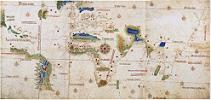





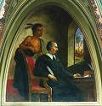



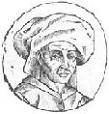




1502 On Jan. 1 Amerigo Vespucci reaches Bahia de Todos Santos, then travels down the coast of South Am. to the River Plata; he returns to Lisbon on July 22, and concludes that South Am. is an independent continent, and is not India. On Jan. 20 Portuguese explorer Gaspar de Lemos founds Rio de Janeiro (Port. "January River") (modern pop. 6M) in Brazil near Mt. Corcovado. In Jan. James IV of Scotland signs a Treaty of Perpetual Peace with Henry VII of England; excommunication by the pope is agreed to as the penalty for breaking the treaty, and all future English and Scottish kings have to renew it within 6 mo. of accession; as if he hadn't just signed a perpetual peace treaty with England, James IV of Scotland establishes a royal navy to protect merchant shipping and defend against the English navy, and refuses to give up his alliance with the French, receiving assistance in the form of money, materials, and shipwrights; since the English go on to violate the treaty, incl. the notorious case of the 1504 murder of Scottish march warden Sir Robert Ker of Ferniehurst (-1504) by English "Bastard" John Heron, it turns out to be a wise move - you're white and you can sing, okay? On Feb. 12 after receiving the title of adm. in Jan., Vasco da Gama (1460-1524) leaves Lisbon on his Second Voyage around Africa with 20 ships, discovering the Seychelles, then arriving in Calcutta on Oct. 30, killing Muslims and spreading Christianity all the way, after which he founds and gives Portuguese protection to Cochin (Emakulam), the first European settlement in India, and the center of Roman Catholic penetration. On May 11 after being returned to favor and getting an order last Sept. 3 to replace his enemy Francisco Bobadilla, Christopher Columbus (1451-1506) begins his Fourth Voyage (last), leaving Cadiz with four ships (Capitano, Vizcaino, Santiago de Palos, El Gallego) and 140 men, with instructions to discover the Malacca Straits and not engage in trade, carrying a 2-year supply of food and Arabic speakers, arriving in Hispaniola on June 29, along with newly-appointed Hispaniola gov. (1502-9) Nicolas de Ovando y Caceres (Nicolás de Ovando y Cáceres) (1460-1518); (a lares or cmdr., and member of the Military Order of Alcantara), future Incan Conquistador Francisco Pizarro Gonzalez (1471-1541), and future Dominican missionary Bartolome (Bartolomé) de las Casas (1484-1566), who accompanied him on his 3rd voyage in 1498, and starts out as a planter; Columbus arrests Bobbin' Bob and ships him to Spain, where he dies in a thrilla' of a shipwreck caused by a hurricane; Columbus goes on to discover Martinique (400 mi. NE of Venezuela), reaches Nicaragua on July 30, seizes a large native canoe containing cacao beans on Aug. 15, visits Costa Rica on Sept. 18, and lands in Portobelo (Porto Bello) (Sp. "Beautiful Port) in Panama on Nov. 2 and plants a colony; the Chibchan-speaking Cuna-Cuna (Cuna) (Kuna) (Guna) (San Blas) (Tule) Indians of Panama have several cases of hereditary albinism, causing legends of white Indians to arise; Ovando later becomes gov. of Santo Domingo, bringing 1.5K Spanish families to populate it and spread their seed into the new white Lebensraum, while instituting hyper-cruel genocidal measures against the West Indies aborigines, which reduce them from 500K in 1492 to 60K in 1507 - pardon me while I vomit? In Mar. after 7 mo. the siege of Queen Christine of Denmark ends when she promises to return to Denmark along with the 70 of 1K men she has left; too late, her hubby King Hans (d. 1513) arrives three days later with a large fleet, but since she is in Swedish hands he returns to Denmark, and she remains hostage until next year, after which King Hans' failure to retake Sweden mars his disposition for life. In May Miguel Corte-Real (b. 1448?) leaves Lisbon to search for his brother Gaspar, charts about 600 mi. of the Labrador coast, reaches Newfoundland, then mysteriously disappears (lost at sea?); in 1503 King Manuel I sends another expedition to learn their fate, but they return after finding nothing, causing him to forget the idea of a Northwest Passage and concentrate on India; an archeologist later discovers evidence that he reached Mass. and lived until the year 1511. In July Alexander I of Poland attacks Novgorod; Ivan III attacks Smolensk, but is defeated by the Livonian Order. In Dec. having lost its ports in the Morea, and Durazzo in Albania, Venice signs the Peace Treaty of Lepanto with the Ottomans, ending the Fourth Ottoman-Venetian War (begun 1499), leaving Venice only Monemvasia, Nafplion, and Patras; the Ottomans are now the #1 naval and commercial power in the E Mediterranean - more reason to Go West, Young Man? The remaining revolting Moors in Granada crushed; Gibraltar is annexed to the Spanish crown; Isabella I the Catholic of Castile (1451-1504) forces the remaining Muslims in Spain to choose between conversion and exile so she can distribute Muslim land and people to Christian Castilians, causing many to feign conversion according to the Muslim doctrine of taqiyya (lying for the cause of Islam), while many flee to the N coast of Africa, found citadels and states, and turn into pirates known as Corsairs, going on to prey on Mediterranean and Atlantic shipping as far N as Britain and Iceland, and recruiting Christian converts to Islam; they are not stopped until 1816; meanwhile, copycat French corsairs begin attacking the Spanish fleet off the coast of Europe, the Azores, and Canaries, following them into the Caribbean; the English then say "let's get some" and follow their lead, and by 1650 the Golden Age of Piracy begins (ends 1726); meanwhile the Roman Catholic Spanish attempt to wipe out all traces of the infidel Moors in Spain, burning 1M Arabic mss. and churning out tons of coverup lit. and art. Ahuizotl dies and is cremated on a funeral pyre, and his nephew Montezuma (Moctezuma) II (1479-1520) becomes emperor of the Aztecs; in 2007 underground chambers in Mexico City containing the remains of Ahuizotl are uncovered. Joao de Nova discovers uninhabited Saint Helena Island in the S Atlantic Ocean 1.2K mi. W of Africa on the same latitude as the Angolan-Namibian border. Cesare Borgia's enemies join forces and rebel, inflicting several defeats on his army, but after French intervention is threatened, a number of the rebels withdraw and capture the town of Senigallia from duke Guidobaldo I of Urbino in an attempt to placate him; after Borgia arrives, he orders the entire group arrested, and has two of the leaders executed. Niccolo Machiavelli (1469-1527) becomes the right hand man of Soderini, the gonfalonier (life pres.) of Florence, and reorganizes the Florentine army (ends 1512). The U. of Wittenberg is founded in Wittenberg, Saxony-Anhalt, Germany by elector Frederick III the Wise, becoming a hotbed of the Protestant Reformation, with alumni incl. Martin Luther and Philipp Melanchthon, and Luther's house the Lutherhaus becoming part of the campus; Shakespeare's Prince Hamlet becomes a student :); in 1817 it merges with the U. of Halle (founded 1691). Henry VII's mother Margaret, countess of Richmond and Derby founds professorships of divinity at Oxford and Cambridge. Portuguese traders take the first peanuts from Brazil and Peru to Africa; they reach China by 1573. Aldus Manutius of Venice founds the New Academy for Greek classical scholars, which counts as members Desiderius Erasmus (1466-1536) (in Italy from 1506-9) and Thomas Lincare, with rules written in Greek; the revival of Greek studies in Europe is led by Erasmus, who corresponds with over 500 scholars and politicians, giving advice and unfreezing the gloomy Roman Catholic atmosphere; too bad, Erasmus won't begin publishing his hit books dissing monasticism and scholasticism until he masters Latin later in this decade (around age 40). Architecture: The Church of St. Mary's in Danzig (Gdansk) (begun 1379) is finished, becoming one of the largest brick churches on Earth. After moving from Milan, where he had been court architect to Duke Ludovico Sforza in 1476-99, Urbino-born architect Donato Bramante (1444-1514) designs the Tempietto (It. "small temple") in San Pietro in Montorio Church in Rome on the alleged spot of the martyrdom of St. Peter, becoming the first example of the Tuscan order (a variation on the Doric order) in the Renaissance, bringing the High Renaissance to Rome. Nonfiction: Anon., The Cantino Planisphere (World Map); produced in Lisbon and smuggled to Italy by Albert Cantino, agent for the duke of Ferrara; the earliest map of South Am. showing part of Brazil and the Treaty of Tordesillas line of 1494. Ambrogio Calepino, Cornucopiae; the first polyglot dictionary; written by an Augustinian monk; starts out with Latin and Greek, then is extended to Italian, French, and Spanish, reaching 11 languages in the 1590 Basil ed. Amerigo Vespucci (1454-1512), Letters About the American Indians; explicit soft-core letters with juicy details about how they go around naked, their sexual habits, cannibalism, communism, etc., which go through many reprints in many languages throughout the cent., becoming one of the first printed bestsellers - the first porno on the Internet? Art: Giovanni Bellini (1430-1516), Baptism of Christ. Lucas Cranach the Elder (1472-1553), Crucifixion (Vienna). Gerard David (1460-1523), St. John the Baptist (triptych) (Bruges) (1502-7). Raphael (1483-1520), Solly Madonna; St. Sebastian (1502-3). Music: Josquin des Prez (1450-1521), First Book of Masses (Missa La Sol Fa Re Mi); by Louis XII's court composer; pub. by Ottaviano de Petrucci. Plays: Gil Vicente (1470-1536), Celebration of the Birth of Joao (John) III (pastoral monologue) (first play) - burning with love? Poetry: Conradus Celtis (Conrad Celtes) (1459-1508), Amores. Jacopo Sannazaro (1458-1530), Arcadia; pastoral romance about the frustrated love of Sincero for Phyllis, becoming the first non-dramatic Renaissance pastoral; written in the 1480s, a pirated ed. is pub. in Venice, and becomes a big hit. Births: Portuguese mathematician Pedro Nunes (Petrus Nonius) (d. 1578) on Jan. 11 in Alcacer do Sol; born into a Jewish converso family; educated at the U. of Salamanca, and U. of Lisbon (Coimbra); teacher of Christopher Clavius (1538-1612). German Wittelsbach elector Otto Henry, Elector Palatine (d. 1559) on Apr. 10 in Amberg; son of Ruprecht of the Palatinate (1481-1504) and Elisabeth of Bavaria-Landsut (1478-1504); brother of Duke Philip the Contentious of Palatinate-Neuburg (1503-48). Portuguese king #15 (1521-57) (founder of the Inquisition) Joao (John) III (the Pious) (the Grocer) (d. 1557) on June 7 in Alcacova Palace, Lisbon; son of Manuel I the Great (1469-1521) and Infanta Maria of Aragon (3rd daughter of Ferdinand II of Aragon and Isabella I of Castile). French prince of Orange (last from the House of Chalon) Philibert of Chalon (d. 1530) in Nozeroy, Franche-Comte; son of John IV of Chalon-Arlay. English Lady Jane Grey backer politician-gen.-adm. John Dudley, Viscount Lisle, Earl of Warwick, Duke of Northumberland (d. 1553) in London; son of Edmund Dudley (1462-1510); husband of Jane Dudley, daughter of Sir Edward Guilford; has seven children, Robert Dudley, earl of Leicester (1533-88), Guilford Dudley (1536-54), John Dudley, viscount Lisle and earl of Warwick (1530-54), Ambrose Dudley, viscount Lisle and earl of Warwick (1531-90), Mary Dudley (-1586), and Katherine Dudley (-1620). Spanish conquistador (Yucatan) Francisco de Montejo y Leon (El Mozo) (the Son) (d. 1565); son of Francisco de Montejo y Alverez (1479-1553). Italian painter Giulio Campi (d. 1572) in Cremona; son of Galeazzo Campi (1477-1536); brother of Antonio Campi (-1591) and Vincenzo Campi (1536-91). Spanish conquistador (Philippines) Miguel Lopez de Legazpi (d. 1572). Deaths: Italian Pitti Palace architect Luca Fancelli (b. 1430). Scottish royal mistress (of James IV) Margaret Drummond (b. 1475). English prince Arthur (b. 1486) (sweating sickness).







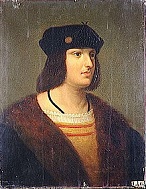



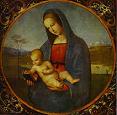

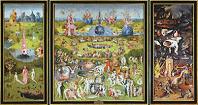
1503 On Jan. 9 after encountering a tropic storm with a water spout, Christopher Columbus lands at the mouth of Rio Belen, after which the natives lead him to a gold mine, causing him to establish a fort and garrison there, leaving one ship behind and returning to Spain with the loot, after which the natives siege it, but luckily Columbus finds out and returns to rescue them, and on Apr. 16 he leaves for home, but on June 20 is marooned in Jamaica after leaving a ship full of teredo worm holes in Puerto Bello and finding the two remaining ships also full of holes, but barters with the natives for a canoe, which he sends to Hispaniola with Diego Mendez for help, but the canoe is captured and Mendez returns, only to be sent again; meanwhile the mean Porras brothers Francesco and Adelanto turn the crew against Columbus, and 48 men abandon him and set out for Hispaniola in 10 canoes, but after encountering storms return. In Feb. after wreaking savage vengeance at a trading station in Calcutta, Vasco da Gama leaves India for Portugal; Alfonso de Albuquerque and his cousin Dom Francisco da Alameda help create the first Portuguese fortresses and trading posts in Cochin and Quilon, laying the foundation stone of Fort Cochin (Kochi) on Sept. 26; Unniram Koyikal I dies, and Unniraman Koyikal II (-1537) becomes ruler of Cochin (until 1537). On Apr. 28 after the Sack of Castellaneta in Apula, Italy (the heel) sees the citizens push back a French occupation force under the Louis d'Armagnac, Duke of Nemours (1472-1503), the Battle of Cerignola near Bari in S Italy sees 6.3K Spanish troops under gen. ("The Great Captain") ("Father of Trench Wafare") Gonzalo Fernandez de Cordoba (1453-1515) defeat the duke's 9K-man army, whose pikes and cannons are no match for the Spanish arquebuses; the duke is KIA. On June 10 Amerigo Vespucci leaves Lisbon for the New World on his Fourth Voyage. On Aug. 8 30-y.-o. James IV of Scotland marries Henry VII's 14-y.-o. daughter Margaret Tudor (1489-1541) in Holyrood Abbey in what becomes known as the Union of the Thistle and the Rose, putting the Scottish kings in line for the English throne if the Tudor line becomes kaput; Scottish poet William Dunbar (1460-1520) writes The Thrissill and the Rois, an allegorical prothalamion (prothalamium) in honor of the marriage, which features a 3-day tournament in Holyrood Palace courtyard that attracts famous champions from N Europe and in which the king leads from the front to wow his nobles, impressing Spanish ambassador Don Pedro de Ayala, who draws a flattering portrait of the couple after failing to get the king to marriage a Spanish princess, and expressing the hope that he will now give up his mistresses (no way?); Dunbar later writes the poem The Wooing of the King when He was in Dunfermeline, about his love romps, making James IV into the first JFK, whose amorous affairs don't affect his political popularity, and Margaret Tudor into the first Jackie?; the paltry £10K dowry shows that Henry VII isn't too enthusiastic about his daughter marrying down? On Aug. 18 Pope (since 1492) Alexander VI (Rodrigo Borgia) (b. 1431) dies of accidental poisoning after he toasts to a couple of cardinals he was plotting to poison with the wrong cup (official explanation: malaria?); his Vatican apts. are sealed until the 19th cent.; on Sept. 22 Francesco Todeschini-Piccolomini is elected Pope (#215) Pius III (1439-1503), but he dies on Oct. 18 after he is poisoned, er, the long investiture ceremony breaks his health, and on Nov. 1 Giuliano Dell (Della) Rovere is elected Pope (#216) Julius II (1443-1513) after the shortest conclave in papacy history, in which bribery is suspected, taking the name of 4th cent. Pope Julius I (337-52); he becomes known as "Il Pontiface Terribilis" for his pride and ambition, also "the Warrior Pope", fighting to end the power of the Borgia family over the Papal States, and reconcile the warring Orsini and Colonna families of Rome; too bad, he's also a pedophile who likes boys - because something is happening here and you don't know what it is, do you, Mr. Jones? In Aug. after the death of Cesare Borgia's father Rodrigo Borgia (Pope Alexander VI), his enemies seize Urbino, Pesaro, Rimini, and other portions of his dominions within two mo., then Pope Julius II deprives him of the rest of his holdings and gives him safe passage to Spanish-held Naples. On Dec. 1 George the Rich of Bavaria-Landshut (b. 1455) dies, leaving no male heir, but remembering that an old agreement with the other Bavarian duchy of Bavaria-Munich to give succession to them in this case was technically illegal since the HRE is supposed to get it, he instead wills his duchy to his daughter Elisabeth of Bavaria-Landshut (1478-1504) and her hubby Duke Ruprecht of the Palatinate (-1505) (bishop of Freising in 1495-8), which is okay to him since they are related branches of the fractured House of Wittelsbach; too bad, mean duke Albert IV the Wise of Bavaria-Munich (1447-1508), remembering the 1329 Compact of Pavia dividing up the House of Wittelsbach between the Bavarian and Palatinate lines decides to keep the split going, beginning the bloody Landshut War of Succession (ends 1505), a 3-way struggle for control of beer-loving Bavaria between the Wittelsbach duchies of Bavaria-Munich and Bavaria-Landshut and Ruprecht's Palatinate branch, which ends in many Landshut villages being reduced to ashes (Ergolding, etc.). On Dec. 29 the Aragonese under gen. Gonzalo Fernandez de Cordoba, Duke of Terranova and Santangelo (1453-1515) defeat the French under the Marquis of Saluzzo with a surprise attack at the Battle of the Garigliano near Gaeta, Italy, ending French resistance in Naples. After the Crimean Tartars pillage the S Lithuanian towns of Slutsk, Kletsk, and Nesvizh and threaten Vilnius, grand duke Alexander Jagiello of Lithuania agrees to a truce with Ivan III of Moscow, ending the Second Russian-Lithuanian War (begun 1500), giving Russia about one-third of the grand duchy, incl. the area around the Upper Oka River, Smolensk, and a score of other towns (Vyazma, Chernihiv, Novhorod-Siverskyi), but keeping the Lithuanian borderlands; Poland surrenders the left bank of the Dnieper River to Russia; the pissed-off Lithuanian nobles appeal to Poland for military aid, leading to continuing wars through the 1560s; Alexander orders the building of a defensive wall around Vilnius (completed 1522). The Casa Contrataccion (Colonial Office) (La Casa y Audiencia de Indias) us established in Seville by Queen Isabella I to control all Spanish exploration and colonization, leaving a 20% tax (Quinto Real) on all precious metals entering Spain, along with other taxes of 10%-40%; in 1508 it pub. the Padron (Padrón) Real, the official secret map required to be kept by all ship pilots. The island of Sandbar, er, Zanzibar becomes a Portuguese colony. After getting a special papal dispensation to set aside the decree of the Lateran Council of 1215 that prohibits all marriages to the fourth degree by consanguinity or affinity (based on Leviticus ch. 18), Prince Henry Tudor of Wales (the future Henry VIII) is betrothed to 18-y.-o. allegedly virginal (ask her duenna?) widow Catherine of Aragon - everybody's taking a supermodel today, everybody's gonna get laid? James IV of Scotland makes a pilgrimage to Whithorn Cathedral in Dumfries and Galloway, having his mistress Janet Kennedy brought to Bothwell in Lanarkshire to bake his cookies; still feeling his oats, he later hooks up with Isabella Stewart, daughter of James Stewart, 1st earl of Buchan, who bears daughter Lady Janet Stewart, Lady Fleming (1505-63), who becomes a governess to her niece Mary Stewart, queen of Scots (and a mistress of Henri II of France?), and finds yet more time for Bessie Bertram and Janet Bare-Arse, who both receive royal gifts for services rendered. Portuguese merchant-explorer Antonio de Saldanha discovers Table Bay at the N end of the Cape Peninsula at the base of Table Mountain in South Africa (later home of Robben Island of Nelson Mandela fame). Santo Domingo gov. Nicolas de Ovando of Santo Domingo begins distributing enslaved Indians in encomiendas (Spanish-run fiefdoms of Indians slaves) to work the gold mines; meanwhile the Spanish found 15 towns on the island. 30-y.-o. Nicolaus Copernicus becomes doctor of canon law in Ferrara. Wealthy famous German sculptor Veit Stoss is defrauded of a large sum of money, forges the name of the embezzler on a promissory note to get even, is caught and branded on both cheeks as a punishment; he then starts a war with the town council of Nuremberg over payment of fees, and gets imprisoned twice, until HRE Maximilian I intercedes in 1508 and restores peace. Ercole I d'Este of Ferrara becomes the patron of French-Flemish composer Josquin des Pres (until 1504); too bad, plague breaks out in Ferrara in the summer, causing the duke and his family to scoot this year, and him the next, after which he settles in Sur-le-Conde on the French-Belgian border (SE of Lille), where he becomes provost of the college church of Notre Dame for life. Ludovico di Varthema (Barthema) (Vertomannus) (1470-1517) of Bologna, Italy becomes the first Euro non-Muslim to make the Hajj to Mecca posing as a Muslim, going on to pub. Itinerario de Ludouico de Varthema Bolognese in Rome in 1510. Architecture: Pope Julius II decides to raze the 4th cent. Basilica of Constantine in Rome on the edge of the Tiber River housing the bones of St. Peter and erect the vastly more ambitious St. Peter's Basilica, a total rebuilding job, with orders that it be taller than the #1 house of God, the 10-story Benedictine Abbey of Cluny in Burgundy, France; he appoints Urbino-born High Renaissance architect Donato Bramante (1444-1514) as chief architect, with indulgences proclaimed for those aiding the effort; Bramante begins the rebuilding work in 1506 and never finishes it, although his plans and drawings for the Vatican Palace and St. Peter's become famous after being executed by Michelangelo. Canterbury Cathedral (begun 1070) is finally finished after 433 years with the tower featuring fan vaulting by John Wastell - I don't know if you remember but I fell in love with you in these umpteen walls? Henry VII's Chapel in Westminster Abbey is begun (finished 1519). Inventions: The pocket handkerchief is invented by ?. Nonfiction: The first English tr. of Thomas a Kempis' Imitation of Christ (1427) is pub. Art: Hieronymus Bosch (1450-1516), The Garden of Worldly Delights (The Millennium) (triptych) (1503-4). Matthias Grunewald (1465-1528), The Mockery of Christ; his paintings of the agony of Christ make him the #1 late German Gothic artist? Filippino Lippi (1457-1504), Virgin and Saints. Il Perugino (1446-1524), The Marriage of Joseph and the Virgin Mary; model for Raphael's "Sposalizio"; really painted by Lo Spagna? Raphael (1483-1520), Diotalevi Madonna; Madonna Connestabile (Madonna and Child with Book) (1503-4); Norton Simon's 2nd favorite painting of all time; The Crucifixion; shows flying angels catching the blood from Jesus' wrists and side in cups, while contemplative saints watch on, and one seems to have his hand out looking for a few drops; meanwhile Christ's usual expression of agony is missing - gimme summa dat blood? O draconian devil, o lame saint? Smile while you say that to the world's numero uno painting? Leonardo da Vinci (1452-1519) begins painting the surprisingly small 30.5 in. x 21 in. sfumato (smoky style) Mona Lisa (La Giocondo) (oil on a poplar board) (finishes in 1506); there are hidden lit. references to the works of Petrarch and Horace?; the model is Mona Lisa del Giocondo (nee Gherardini) (1479-1542), wife of Florentine merchant nobleman Francesco del Giocondo; she is mourning the death of her baby daughter so she wears a transparent veil; after spending four years on the portrait he leaves it with the Giocondos, then, shortly before going to France at the invitation of Francis I, he paints another portrait at the request of Giuliano de Medici of his mistress Costanza d'Avalos Piccolomini (-1560), whose nickname is La Gioconda (the Smiler); he uses the excuse that it is incomplete to keep it with him until death; the painting in the Louvre is the 2nd one, while the first one ends up in London; Raphael also makes a sketch of one of the two portraits; her face is 83% happy, 9% disgusted, 6% afraid, and 2% angry; the eye trick is caused by the left half of her face being bigger than the right, and the horizon on her left side being higher than on her right side; her eyebrows are shaved, her mouth is closed, her hair is parted, her hands are crossed, and her arms are not bare; an X-ray of the Louvre painting shows three different versions of the subject under the final one. Births: Italian Mannerist painter Parmigianino (Girolamo Francesco Maria Mazzola) (d. 1540) on Jan. 11 in Parma. German Roaman Catholic cardinal Johannes (Johann) (John) Gropper (d. 1559) on Feb. 24 in Soest. Spanish Hapsburg archduke of Austria (1521-64) and HRE (1556-64) Ferdinand I (d. 1564) on Mar. 10 in Alcala de Henares (near Madrid); son of Philip I the Handsome of Austria (1478-1506) and Joanna the Mad of Castile (1479-1555); younger brother of HRE Charles V (1500-58); motto: "Let justice be done though the world perish". Italian scholar Antonio Francesco Grazzini (Il Lasca) (Leuciscus) (d. 1584) on Mar. 22 in Florence. German Wettin elector of Saxony (1532-47) ("Champion of the Reformation") and duke (547-54) John Frederick I (the Magnanimous) (d. 1554) on June 30 in Torgau; eldest son of elector John the Steadfast (1468-132) and 1st wife Sofie of Mecklenburg-Schwerin (-1503) (dies on July 12); husband (1526-) of Sybille of Cleves (1512-54) (sister of Anne of Cleves); father of John Frederick II (1529-95); cousin of Maurice (1521-53). Danish-Norwegian king (1537-59) Christian III (d. 1559) on Aug. 12 in Gottorp; son of Frederick I and 1st wife Anna of Brandenburg. German Wittelsbach count palatinate of the Rhine and duke Philip the Contentious of Palatinate-Neuburg (d. 1548) on Nov. 12 in Heidelberg; son of Ruprecht of the Palatinate (1481-1504) and Elisabeth of Bavaria-Landsut (1478-1504); brother of Otto Henry, elector Palatine (1502-59). Italian Mannerist painter Agnoli di Cosimo (Il Bronzino) (d. 1572) on Nov. 17 in Florence; pupil of Raffaellino del Garbo and Pontormo. Italian duke of Parma #1 (1545-7) Pier Luigi Farnese (d. 1540) on Nov. 19 in Rome; bastard son of Cardinal Alessandro Farnese (Pope Paul III); helped sack Rome in 1527. The man who can write history before it happens is born a Jew and baptized a Christian by age nine at a time when being Jewish is close to a death sentence? French doctor, astrologer and Wandering Jew (crypto-Christian) prophet Michel de Nostredame (Nostradamus) (d. 1566) on Dec. 14 (noon) in St. Remy, Provence; eldest of four sons of Jaume (Jacques) and Reyniere, Jews who convert to Catholicism by 1512; youngest son Jean becomes procureur of the parliament of Provence, and writes ribald Provencal songs and commentaries. English "Tottel's Miscellany" 6' poet-diplomatist (father of the English sonnet) Sir Thomas Wyatt (OF "small fighter") (d. 1542) in Allington Castle, Kent; father of Sir Thomas Wyatt the Younger (1521-54); educated at St. John's College, Cambridge U. French printer Robert I Estienne (AKA Robert Stephanus) (d. 1559) in Paris. French anatomist Charles Estienne (d. 1564); born in a famous family of French humanist printers. Spanish poet and statesman Diego Hurtado de Mendoza (d. 1575). Deaths: German printer Peter Schoeffer (b. 1425) in Mainz. Italian pope (1492-1503) Alexander VI (Rodrigo Borgia) (b. 1431) on Aug. 18 in Rome; his apts. in the Vatican are sealed for fear of future popes being associated with the Borgias, and are not reopened until 1889 by Pope Leo XIII. French nobleman Peter II, duke of Bourbon (b. 1438) on Oct. 10 in Moulins. Italian pope (1503) Pius III (b. 1439) on Oct. 18. Swedish regent Sten Sture the Elder (b. 1440) on Dec. 14. Bavarian duke (of Landshut) George the Rich (b. 1455) on Dec. 1 in Ingolstadt. Italian painter Giovanni Donato da Montorfano (b. 1460) in Milan. English queen consort (1486-1503) Elizabeth of York (b. 1466) on Feb. 11 in Richmond. French gen. Louis d'Armagnac, duke of Nemours (b. 1472) on Apr. 28 in Cerignola, Italy (KIA).











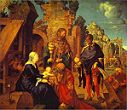

1504 On Jan. 31 Louis XII of France and Ferdinand II of Aragon sign the Treaty of Lyons, ceding Naples to Aragon; Ferdinand II of Aragon becomes Ferdinand III of Naples, giving the Spanish crown control of the Two Sicilies (until 1713); in 2018 the code used by Ferdinand II and Gonzalo de Cordoba, containing 88 symbols and 237 letters is finally cracked. In Jan. after working day and night since 1501 under dripping water, rarely taking his shoes off, workaholic Italian Florentine sculptor Michelangelo di Lodovico Buonarroti Simoni (1475-1564) finishes sculpting his dangly 16'4" Carrara marble Statue of David (most famous penis in history?), and unveils it to the Florentines, who adopt it as a symbol of their city and its republican aspirations, and make it the first statue displayed on a plinth since Roman times (they are young, beautiful David with the big slingshot and pouch of smooth stones at the ready, and the Medicis are big bad dumb Goliath?); the hard work doesn't seem to shorten Big Mike's lifespan any? On Jan. 21 London bishop (since 1502) William Warham (1456-1532) becomes lord chancellor of England, and archbishop of Canterbury on Mar. 9 (until Aug. 22, 1532), the last before the big split with the Mother Church. There's some things money can't buy, but for everything else there is Mastercard? The myth of white racial superiority based on the ease of scamming the less bright (white is bright) is born in the Americas? On Feb. 29 after Columbus and his crew, anchored in two damaged ships off Jamaica for a year get in trouble with the local Arawaks, who refuse to give them any more food in exchange for worthless trinkets, and learning of a total lunar eclipse in his Rabbi Abraham Zacuto Almanac, Columbus hornswaggles the chieftains to give food by pretending to blot out the Moon like he predicted three days earlier; they are finally rescued from Jamaica on June 29 by a relief caravel from Hispaniola, and return to Spain on Nov. 11, riddled with disease; too bad, Columbus claims to have found rich gold fields in Veraguas on the Isthmus of Panama, causing the area W of the Gulf of Darien to be misnamed Castilla del Oro, while the area to the E is called Nueva Andalusia, which incl. the N coast of South Am., and the combined areas are called Tierra Firme. In May Cesare Borgia is arrested in Naples for conspiracy, and imprisoned in the Castle of Medina del Campo (until 1506). On June 18 Amerigo Vespucci returns to Lisbon. On July 2 Bogdan III the One-Eyed (1470-1517) becomes prince (voivode) of Moldavia (until 1517); after demanding the hand of Elisabeth, sister of Polish king Alexander the Jagiellonian twice and being refused, he raids S Poland until they give her to him; in return he lets up on the Roman Catholic Church in Moldavia. On Sept. 10 Philibert II the Handsome (b. 1480) dies childless, and his half-brother Charles III the Good (1486-1553) (who had started life out with no expectations of inheriting any monarchy but got lucky when his father got lucky in 1496, putting him in this position) becomes surprise duke of Savoy (until 1553). On Sept. 12 Duke Albert IV of Bavaria-Munich defeats the Bohemian allies of Rupert of the Palatine in Wenzenbach, and kills him and his wife Elisabeth on Aug. 20 and Sept. 15 with the help of hero knight Gotz (Götz) von Berlichingen (1480-1562); they died of dysentery?; the HRE now has to decide whether he will exercise his own right to take Landshut or give it to Albert IV. On Sept. 22 wanting to keep Brittany independent of France, Anne of Brittany concludes the First Treaty of Blois, whereby the HRE recognizes French rule of Milan, betrothing 4-y.-o. Prince Charles (son of Juana the Mad and Philip I and grandson of HRE Maximilian I) (future HRE Charles V) to her infant daughter Claude, with the promise of both Brittany and Burgundy; too bad, the Valois kill the deal for fear of reducing the size of France, and the engagement is broken off in 1506 in favor of her French cousin Francis, duke of Angouleme (future Francis I); they marry in 1514. It's all about Ferdie? On Nov. 26 Queen (since Dec. 11, 1474) Isabella I of Castile and Leon (b. 1451) dies, and their mentally unstable daughter Joanna (Juana) the Mad (1479-1555) becomes queen of Castile (until Apr. 12, 1555) under her father Ferdinand II's regency; her husband Philip I the Handsome contests his rights to become joint ruler, but it doesn't really matter as both are absent in Flanders, leaving Ferdinand a free hand as actual ruler; Ferdinand V of Castile is no more, but he's still Ferdinand II of Aragon and Sicily, and Ferdinand III of Naples; early next year he persuades the Cortes that Joanna is too soft in the head to rule alone - plenty of bling to wear on armed forces' day? Babar (Baber) (Zahir ud-Din Muhammed) (1483-1530) captures Kabul, and establishes a kingdom in Afghanistan. The Funj Sultanate of Sennar (Sinnar) (Blue Sultanate) in E of Darfur in N Sudan with capital at Sennar is founded as a confederation of Islamic sultanates and dependent mainly animist tribal cheftaincies by Amara Dungas (-1534), who during the Ottoman conquest of Egypt in 1517 successfully uses diplomacy to stop the Ottoman armies from advancing into his realm, and officially converts it to Islam in 1523, reaching its peak in the 16th cent.; it becomes kaput on June 14, 1821 when Mehmet Ali's son Ismail leads an army into Sennar without resistance and deposes last king (since 1805) Badi VII, then annexes it to Egypt on Feb. 13, 1841, later becoming part of Anglo-Egyptian Sudan and the Repub. of Sudan. The Scottish parliament sends Alexander Gordon, 3rd Earl of Huntly (-1524) with a royal fleet to pacify the Highlands. James IV of Scotland dumps his brother Duke James of Ross, and appoints his bastard son Alexander Stewart (1493-1513) as archbishop of St. Andrews to get his hands on the rich revenues, causing grumbling. Am. Indian Taino queen Anacaona (b. 1474), AKA the Golden Flower of Hispaniola is hanged by Spanish gov. Nicolas de Ovando along with her nobles for rebellion, and she goes on to become a heroine in Haiti. The Vienna-Brussels postal service is extended to Madrid. Pope Julius II gives the Shroud of Christ (Shroud of Turin) its own special feast day. Pope Julius II issues a bull establishing the U. of Santiago de Compostela in Galicia, N Spain. Thomas More (b. 1478) becomes an English MP, and pisses off Henry VII by urging a decrease in a proposed appropriation, causing him to order his father imprisoned, not releasing him until a fine is paid and More leaves Parliament. The Islamic Funj Sultanate of Sennar (Sinnar) AKA the Blue Sultanate in N Sudan is founded (ends 1821). Architecture: The limestone-brick Amiriya Madrasa in Rada in S Yemen is built. Inventions: Peter Heinlein (Henlein) (1480-1542) of Nuremberg, Germany invents the coiled mainspring Pocketwatch (Watch) (portable clock), called the Nuremberg Live Egg; it only has an hour hand, and is so heavy it has to be worn on a belt or around the neck. Art: Lucas Cranach the Elder (1472-1553), Rest on the Flight to Egypt. Albrecht Durer (1471-1528), The Adoration of the Magi; The Life of the Virgin (1504-05) (16 blocks); Adam and Eve (engraving); Philosophia, Mother of the Liberal Arts (engraving) (made for Conrad Celtis). Il Giorgione (1477-1510), Madonna Enthroned Between St. Francis and St. Liberale (triptych altarpiece of Castelfranco Cathedral). Michelngelo (1475-1564), Statue of David (Jan.) (begun 1501) (16'4" Carrara marble); most famous penis in history? Raphael (1483-1520), Spozalizio (The Engagement of Virgin Mary) (The Marriage of the Virgin) (first major work); Granduca Madonna (Madonna del granduca). Births: Italian Pope (1566-72) Pius V (Anthonio/Michele Ghisleri) (d. 1572) on Jan. 17 (St. Anthony's Day) in Bosco, Milan. Italian Mannerist "Rape of Helena" painter-sculptor-architect (in France) Francesco Primaticcio (d. 1570) on Apr. 30 in Bologna; spends most of his career working on Chateau Fontainebleau; known for his long-legged babes. English archbishop of Canterbury (1559-75) Matthew Parker (d. 1575) on Aug. 6 in Norwich. German landgrave of Hesse (1509-67) (Lutheran champion) Philip I (the Magnanimous) of Hesse (d. 1560) on Nov. 13 in Marburg, Hesse; son of William II of Hesse (1469-1509) and 2nd wife Anna of Mecklenburg. English adm. Sir George Carew (d. 1545); brother of Sir Peter Carew (1514-75). Spanish conquistador (founder of Guadalajara) Cristobal de Onate (Cristóbal de Oñate) (d. 1567) in Vitoria (Onate), Spain; son of Juan de Onate (Basque "at the foot of the mountain pass") of the House of Haro; father of Juan de Onate (1552-1626). English "Ralph Roister Doister" playwright-cleric Nicholas Udall (Udal) (Woodall) (Uvedale) (d. 1556) in Hampshire; educated at Westminster School, Winchester College, and Corpus Christi College, Oxford U; convicted in 1541 of buggery with two of his pupils at Eton College. Italian organist-composer Francesco di Bernardo Corteccia (d. 1571). Deaths: German astronomer Bernard Walther (b. 1430) in Nuremberg. Moldavian Christian prince (1457-1504) Stephen III the Great (b. 1433) on July 2 in Suceava, Romania; won 34 of 36 battles against the Ottomans. Italian architect-sculptor Gian Giacomo Dolcebuono (b. 1445) in Milan. Spanish queen Isabella I the Catholic of Castile and Leon (b. 1451) on Nov. 26. Italian astronomer Domenico Maria Novara (b. 1454) in Bologna. Dutch priest-reformer Jan Standonck (b. 1454) on Feb. 4/5. Florentine painter Filippino Lippi (b. 1457). German Wittelsbach bishop of Freising Ruprecht of the Palatinate (b. 1481) on Aug. 20 in Landshut (KIA?) (dysentery?).

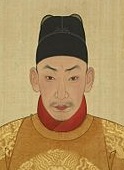

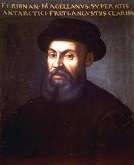

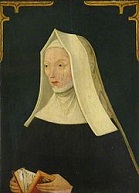
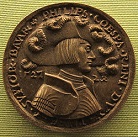

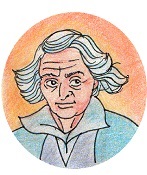
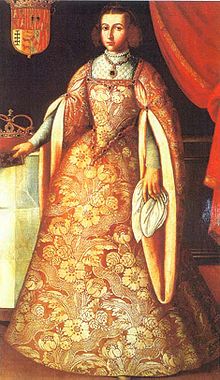

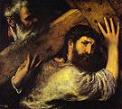


1505 On Mar. 22 after signing the Treaty of Blois with Louis XII of France, who cedes his claim to the kingdom of Naples and the kingdom of Jerusalem to her, conditional on a male heir being produced, dead Isabella I the Catholic's husband Ferdinand II the Catholic marries teen fox (granddaughter of his half-sister) Germaine de Foix (1488-1538), daughter of Louis XII's sister. In May Amerigo Vespucci begins his Fifth Voyage (ends Dec.). On June 8 emperor (since Sept. 22, 1487) Hongzhi (b. 1470) dies, and on June 19 his 14-y.-o. eldest son Zhengde ("right virtue") (Zhu Houzhao) (1491-1521) becomes Ming emperor #10 of China (until Apr. 20, 1521), becoming friendly with the Muslims and commissioning Muslim eunuchs to produce blue-white porcelain with Persian and Arabic inscriptions, and being rumored to convert to Islam although his debauched lifestyle denies it; European syphilis reaches Canton; an edict prohibiting the slaughtering of pigs is passed during his reign; eunuch minister Liu Jin (1451-1510), leader of the Eight Tigers group of court eunuchs establishes his power in the Chinese govt., imprisoning 300+ officials and becoming the most corrupt official in Chinese history, the emperor in all but name? On July 2 (Wed.) German cocksman, er, law student Martin Luther (b. 1483) is struck by lightning in Erfurt (a four in a million chance?), and on July 16 sees the light and enters the St. Augustine Monastery (Augustinekloster) in Erfurt (130 mi. SW of Berlin) (until 1511). On July 30 German king Maximilian I holds a meeting at the Reichstag (Diet) in Cologne, and gives Bavaria-Landshut to Albert IV of Bavaria-Munich, finally uniting Bavaria (split since 1349) and ending the Landshut War of Succession (begun 1503), but reserves the fragmented Palatinate-Neuberg (Junge Pfalz), stretching from the Upper Danube in Franconia to the N end of the Upper Palatinate to George the Rich's grandsons Philip the Upright (Aufrichtige), Elector Palatine (1448-1508) and Otto Henry, Elector Palatine (1502-59), with capital at Neuberg an der Donau, and Palatine Count Frederick II as regent; for his trouble the HRE takes the city of Kufstein in the Tyrol on the Inn River (location of a neat 13th cent. fortress) for himself, and gives the imperial city of Nuremberg important territories, incl. Lauf, Hersbruck, and Altdorf; when Otto Henry grows up he becomes one of the top German Renaissance builders, building a magnificent palace in Neuburg an der Danau and improving Heidelberg Castle. On Oct. 27 grand duke (since 1462) Ivan III the Great (b. 1440) dies, and on Nov. 6 his son Vasily (Vasilii) (Basil) III Ivanovich (Gavril) (1479-1533) becomes grand duke of Muscovy (Moscow) and "sovereign of all Russia" (until Dec. 3, 1533). John Zapolya (1487-1540) and the anti-foreign Hungarian nobles secure a decree by the Hungarian Diet that after the death of the current king Vladislaus I, no foreign ruler will be chosen as king of Hungary - the Hungarian language is too hard for foreigners to learn? On Nov. 24 Ferdinand II of Aragon and Philip I the Handsome sign the Treaty of Salamanca, agreeing to rule horsehead-shaped Castile (the main cut of Spain) jointly with Ferdinand's daughter Juana the Mad; Henry VII repudiates the betrothal of his son Prince Henry to Catherine of Aragon, since her dead mother Isabella I's kingdom of Castile and Leon is breaking up and it's time to flush the garbage?; Catherine is left stranded without support in England. HRE Maximilian I begins reforming the Holy Roman Empire into a universal Hapsburg monarchy. The spics, er, Spanish Castilians take Qassasa and Marsa al-Kabir in the Maghreb (Maghrib) (Morocco, Algeria and Tunisia). The Uzbeks recapture Samarkand from the Timurids. Hugh Roe O'Donnell dies, and his son Sir Hugh Dubh (pr. "doo") O'Donnell (-1537) becomes king of Tyrconnell in Ulster, Ireland (until 1537), expanding O'Donnell power into N Connaught while developing an alliance with the English crown authorities in Dublin, getting knighted by Henry VII in London in 1513 after a 1511 pilgrimage to Rome; meanwhile he leaves his boy son Manus O'Donnell (-1564) in charge, who turns traitor and allies with the hated O'Neills, causing daddy to appeal to the Maguires for aid, leading to another clan war in 1522. Spanish navigator Juan de Bermudez (Bermúdez) (-1570) discovers Bermuda (650 mi. E of N.C.). in his ship La Garza en route from Hispaniola to Spain. The Khmer royal court moves from Phnom Penh to Udong. You're ruining my genius career, you bum? Ferdinand Magellan (1480-1521) sets out on his first expedition to the East Indies to install adm. Dom Francisco de Almeida (1450-1510) as the first Portuguese gov. (viceroy) of the East Indies, incl. India, where he works to exclude Muslims and Venetians from a slice of the commerce pie - I want to give you this Capitol One check for a million dollars? The Kilwa Sultanate off modern-day Tanzania, ruled since 1277 by the Abu Moaheb family is overthrown by the Portuguese, and begins fragmenting, with some being absorbed by Oman. In 1505 Sri Lanka (Ceylon) is discovered by Portuguese explorer Lourenco de Almeida (1480-1508) (son of Francisco de Almeida), who founds a settlement. Humanist churchman John Colet (1467-1519) becomes dean of St. Paul's in London (until 1519), going on to preach against auricular confession and clerical celibacy and promote Bible reading, influencing Erasmus. Albrecht Durer visits Venice for the 2nd time, and keeps a studio there until 1507, studying the Venetian masters, esp. Giovanni Bellini (1430-1516), which ends his problem with angularity and stiffness in his figures. Monte Cassino Abbey in Italy, founded in the 6th cent. by St. Benedict of Benedictine Rule fame is joined with the monastery of St. Justina of Padua. The U. of Seville in Spain is founded as the Colegio Santa Maria de Jesus. Christ's College at Cambridge U. (founded 1437) is refounded by Lady Margaret Beaufort, Countess of Richmond and Derby (1443-1509), mother of Tudor king Henry VII; alumni later incl. John Milton and Charles Darwin. The Barber Surgeons of Edinburgh is founded. A comet "as big as the Moon" is seen in London - ahoo, werewolves of London? James IV of Scotland builds the £8K ship Margaret at Leith using an imported wooden keel, then establishes larger royal dockyards at Newhaven and Airth on the Forth River to build larger ships. Architecture: Pope Julius II commissions Michelangelo to build his Tomb of Pope Julius II in the Church of San Pietro in Vincoli, in the hills above the Colosseum, complete with 42 large statues; too bad, after spending over a year designing it and transporting marble from Carrara, the project is abandoned for lack of funds, and he takes until 1545 to finish it after joining the Spirituali and turning Moses' head away from the altar to signify that he doesn't look to the Church for salvation. The Mosque of Bayezid II in Constantinople is finished, becoming the first Ottoman monument showing influence from the Hagia Sophia basilica. Science: Italian mathematician Scipione del Ferro (1465-1526) partially solves the cubic equation, obtaining the full solution in 1520. Nonfiction: Christopher Columbus (1451-1506), Book of Prophecy (Prophecies); compiled before his 1502 voyage; how the Holy Spirit and the Scriptures inspired his discovery of the New World, predicting the End of the World in 155 years. Johannes Scotus, World Map. Jakob Wimpfeling (1450-1528), Epitome Rerum Germanicarum. Art: Giovanni Bellini (1430-1516), Altarpiece of Church of San Zaccaria, Venice. Vittore Carpaccio (1460-1526), Life of the Virgin Mary (6 scenes); incl. Donors in Adoration. Albrecht Durer (1471-1528), The Life of the Virgin (engravings). Il Giorgione (1477-1510), Trial of Moses; Judgment of Solomon (twin paintings). Lorenzo Lotto (1480-1556), The Maiden's Dream. Il Perugino (1445-1523), Combat of Love and Chastity. Raphael (1483-1520), Small Cowper Madonna. Il Sodoma (1477-1549), Life of St. Benedict (32 scenes) (1505-8) (Convent of Monte Oliveto, Siena). Titian (1477-1576), Christ Carrying the Cross (Chapel of San Rocco, Venice); Man of Sorrows (Scuola di San Rocco, Venice). Leonardo da Vinci (1453-1519) begins to paint the life-size Battle of Anghiari (a little fracas in which one man is killed falling off his horse) in the Council Chamber of Florence's Palazzo Vecchio, but is called to Milan before finishing; later in this cent. Giorgio Vasari paints murals over it; in 2005 the image is found intact behind a false wall. Poetry: William Dunbar (1460-1520), The Dance of the Sevin Deidly Synnis (1505-8). Births: German Hohenzollern prince-elector #6 of Brandenburg (1535-71) (Roman Catholic-turned-Protestant) Joachim II Hector (d. 1571) on Jan. 31 in Colln; eldest son of Joachim I Nestor (1484-1535). Polish poet ("the Father of Polish Literature") Mikolaj (Nikolaj) (Nicholas) Rej of Naglowice (d. 1569) on Feb. 4 in Zurawno (modern-day Zhuravno, Ukraine). Swiss "Chronicon Helveticum" historian Aegidius (Giles) (Glig) Tschudi (d. 1572) on Feb. 5 in Glarus; known for his map drawings. English noblewoman Jane Boleyn (nee Parker), Viscountess Rochford (d. 1542) in Norfolk; sister-in-law of Anne Boleyn; lady-in-waiting to Catherine Howard. German adventurer Nikolaus Federmann (Nicolas de Federman) (d. 1542) in Ulm. English ambassador (to the HRE and Flanders) Philip Hoby (Hobby) (Hobbye) (d. 1558) in Leominster; half-brother of Sir Thomas Hoby (1530-66). French marshal (Roman Catholic) (favorite of Henry II) Jacques d'Albon, Seigneur de Saint-Andre () (d. 1562). Scottish Protestant reformer ("the Thundering Scot") John Knox (d. 1572) in Haddington; educated at the U. of Glasgow. English Bible scholar Richard Taverner (d. 1575) in Brisley (near Norwich); educated at Corpus Christi College and Cardinal College, Oxford U., and Cambridge U. Belgian Walloon composer Mattheus Le Maistre (d. 1577) in Roclenge sur Geer. Italian violinmaker family founder Andrea Amati (d. 1578) in Cremona; father of Antonio Amati (1550-) and Girolamo Amati (1551-1635); grandfather of Nicolo Amati (1596-1684); great-grandfather of Girolamo Amati (Hieronymus II) (1649-1740). French surgeon Pierre Franco (d. 1578); inventor of the suprapublic lithotomy cataract operation, and surgical repair of hernia; forerunner of urology. English organist-composer Thomas Tallis (d. 1585). Spanish "The Sinner's Guide" Dominican mystic monk poet Luis de Granada (Louis of Granada) (d. 1588) in Granada. Deaths: German composer Jakob Obrecht (b. 1430). Italian duke of Ferrara (1471-1505) Ercole I d'Este (b. 1431) on June 15. Polish-Lithuanian queen consort (1454-92) Elizabeth of Austria (Hapsburg) (b. 1436) on Aug. 30 in Cracow. Russian tsar (1462-1505) Ivan III the Great (b. 1440) on Oct. 27 in Moscow. Egyptian Muslim scholar Imam Jalaluddin al-Suyuti (b. 1445); leaves 20 vols. of Quranic studies, incl. Commentary of the Two Jalals. Chinese Ming emperor #9 (1487-1505) Hongzhi (b. 1470) on June 8. Algerian Muslim scholar Muhammad ibn Abd al-Karim al-Maghili (b. ?) in Tlemcen; known for bloodily expelling the city's Jews, who had lived there since 70 C.E.
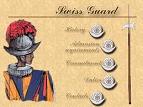






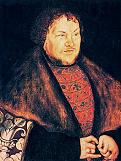


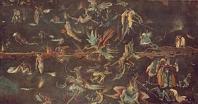





1506 On Jan. 21 the Swiss Guard (Guardia Swizzera), consisting of 10 officers and 110 men (all required to be Swiss, and non-officers required to be non-married) begins guarding Pope Julius II; their colorful vertical-striped tunics are said to have been designed by artist Michelangelo. In the spring 30K Crimean Tartars (allies of Moscow) under Menli I Girai's sons Fetih I Giray and Burnas I Gray invade Lithuania, and are routed on Aug. 6 by 7K-10K Lithuanians under marshal (since 1500) prince Michael (Mikhail) Lvovich Glinski (1470-1534) in the Battle of Kletsk. In Mar. the Battle of Cannanore is a decisive V for a small Portuguese fleet under Lourenco de Almeida over a 200+ ship Indian fleet manned by Hindus, Arabs, and Turks equipped with cannons manufactured with the help of two Italians from Milan. On May 20 Christopher Columbus (Cristobal Colon) (b. 1451) ("Don Cristobal Colon, Almirante") dies in Valladolid, Spain in wealth and luxury, marking the end of an era. Who needs a mad queen in Castile? On July 12 Philip I the Handsome (Fair) of Castile (b. 1478) becomes king of Castile (the first Hapsburg), briefly uniting the the kingdoms of Castile and Aragon through his wife Joanna the Mad, heir presumptive to the crown of Aragon; on July 27 the Treaty of Villafafila (Villafáfila) is signed by Ferdinand II the Catholic and Philip I the Handsome in Benavente, Zamora, confirming the incapacity of mentally unstable Juana the Mad to rule, and requiring Federinand II to cede all power to Philip I, who is proclaimed king of Castile and the Indies; too bad, on Sept. 25 he suddenly dies in Burgos, Castile of typhoid fever (poisoned by Ferdinand II?), and his wife Joanna (Juana) the Mad of Castile (1479-1555) (Isabella I's daughter) attempts to rule from Torquemada, causing Castile to go into anarchy, plague, and famine that kills half the pop., causing a council of regency under Archbishop Cisneros is created, who invite her daddy Ferdinand II to arrive next July, who quickly restores health and order, and talks her on July 30 into abdicating in his favor, after which in Feb. 1509 she is confined to the Santa Clara Convent in Tordesillas (near Valladolid) for life, while remaining legal queen of Castile (until Apr. 12, 1555), taking her hubby Philip's corpse with her to talk to, causing rumors that she went er, mad; Ferdinand II (the Catholic) assumes the regency of Castile (until Jan. 23, 1516), while Philip's dominions in the Low Countries go to his son Charles (later HRE Charles V). On Aug. 19 king (since Dec. 12, 1501) Alexander I dies, and on Dec. 8 his brother Zygmunt (Sigismund) I Stary (the Old) (1467-1548) becomes king of Poland and grand duke of Lithuania (until Apr. 1, 1548). On Nov. 12 after the king sets the Darien (Atrato) River as the boundary for the Terra Firme provinces of Castilla del Oro and Nueva Andalusia, Alonso de Ojeda (1465-1515) (new gov. of Nueva Andalusia) sails from Hispanola on two ships with 300 men, and on Nov. 15 Diego de Nicuesa (1464-1511) (former rich popular ladies man and official royal carver in Madrid, but an arrogant incompetent prick in the New World, causing him to be less popular than Ojeda), new gov. of Castilla del Oro sails from Hipanola on five ships with 700 men; Ojeda lands near Cartagena and tries to convert and subdue the pesky natives and squeeze them for gold, ending up pissing them off and getting most of his force killed, after which Nicuesa's force happens by after getting lost, and magnanimously rescues them, massacring every last Indian during their victory celebration, and taking a large booty; too bad, after ignoring his shipmates' advice and getting lost again, Nicuesa's ship runs aground off the coast of Panama, and half of his men are killed by hostile natives and disease by the time they make it to their destination overland at Belen, after which they find the land laid waste by the Indians to starve them, forcing them to move to new digs in Puerto Bello (Sp. "beautiful port"), finding a half-buried anchor left by Columbus, after which they are soon driven out by the Indians. In Nov. Cesare Borgia (b. 1476) escapes from prison in Naples to Navarre and joins the king in an expedition against Castile, where he is KIA in battle in Viana next year - another episode of Toy Story, starring the Artist Formerly Known as Prince? He needs a woman in Windsor? The Treaty of Windsor betrothes archduke Philip's sister Margaret of Austria to Henry VII's son Henry, prince of Wales; Philip undertakes the extradition of Yorkist pretender Earl Edmund of Suffolk, who is imprisoned in the Tower of London. Philips de Schone dies, and HRE Maximilian I becomes regent over the Dutch regions for the 2nd time, and appoints his daughter Margaret (Margaretha) (1480-1530) as governess. Genoa revolts from French rule. Bologna is incorporated by Pope Julius II into the papal states (until 1796). The castle of Scottish rebel Torquil MacLeod of Lewis in Stornoway (on the NE coast of the 100-mi.-long island of Lewis and Harris in NW Scotland) is sieged by Alexander, 3rd earl of Huntly, causing MacLeod to flee and rebel leader Donald Duck, er, Domhnall Dubh (-1545) to be captured; too bad, the pesky highlands keep up their revolt until 1509. The Uzbeks capture Bukhara (W of Samarkand). Swiss parish priest Ulrich Zwingli (b. 1484) is assigned to the town of Glarus, a center for recruiting mercenaries. Franz von Taxis becomes postmaster gen. for the Hapsburg Empire, founding a mail-carrying dynasty. Niccolo Machiavelli creates the Florentine Militia, Italy's first nat. army. Sultan Bajazet recovers Alessio (in modern-day Albania) from the Venetians. Timurid ruler (since 1469) Husayn Bayqara dies, and the Timurid Dynasty founded by Timur (Tamerlane) in Iran goes up for grabs. Yonsan Gun is depoosed in a coup for tyranny, and his half-brother Chungjong (Yi or Lee Yeok) (1488-1544) becomes Yi king of Korea (until Nov. 29, 1544). Ships from France (Fahlanki) enter the Humen (Bogue) (Bocca Tigris) Strait in the Pearl River Delta, and promise tribute; too bad, their noisy cannon piss-off the pop., causing the emperor to order them to leave immediately. After having to pass up a job as viceroy of India due to temporary blindness, Portuguese explorer Tristao da Cunha (1460-1540) (cousin of Afonso de Albuqueraue) sails to the E coast of Africa in a fleet of 15 ships to conquer Socotra Island, discovering the five volcanic Tristan da Cunha Islands 1.2K mi. from Saint Helena Island, the most remote archipelago on Earth, which remains uninhabited until 1810, visiting Madagascar and Mozambique before conquering Socotra - you don't even have a rear window wiper? Augsburg merchant Jakob Fugger (1459-1525) begins importing spices from the East Indies to Europe, and so profitably that he becomes known as "the Rich", one of the richest men in history - oh to live on Sugar Spice Mountain with the Fuggers and the colored balloons? The U. of Frankfurt an der Oder (European U. Viadrina Frankfurt), the first state univ. in Brandenburg is founded by Hohenzollern prince-elector (1499-1535) Joachim I Nestor (1484-1536); too bad, he backs the Roman Catholic Church all the way against the pesky Lutherans, then watches his wife Anna of Brandenburg and her hubby king Christian III of Denmark go Protestant, along with Brandenburg, and ends up fleeing to Saxony in 1528; the univ. is transferred to Breslau in 1811. The U. of Urbino in Urbino, Italy is founded. The Laocoon (Laocoön) Group (Laocoon and His Sons) of 2nd cent. B.C.E. sculptures are rediscovered at the palace of Titus in Rome. Leonardo da Vinci returns to Milan, and begins compiling the 72-page Codex Leicester ms. (finished 1508-9), which theorizes that sunlight reflected from the oceans acts as a secondary light on the Moon; he bequeaths it to his pupil Francesco Melzi, and it goes through the hands of Milanese sculptor Guglielmo della Porta, then Giuseppe Ghezzi in 1690, followed in 1717 by Thomas Coke, Earl of Leicester, giving it its name; Armand Hammer acquires it in 1980, followed by Bill Gates in 1994. Architecture: The Vatican builds its Pentagon before the U.S. has even been thought of? Donato Bramante starts work on St. Peter's Basilica in Rome by demolishing the original 4th cent. Church of St. Peter, employing 2.5K men for many weeks in throwing out tombs, statues, mosaics, icons and altars; too bad his new bldg. has faults in it which are found after his death and are too costly to fix, and it ends up taking 120 years and 27 popes, tapping out the resources of the Vatican - despite being totally vaporizable by a small suitcase-sized nuke? Seville Cathedral in Spain is finished, passing Hagia Sophia as the world's largest cathedral, later becoming the burial site of Christopher Columbus. Nonfiction: Johann Reuchlin (1455-1522), Rudimenta Linguae Hebraica; first Hebrew grammar written by a Christian. Art: Hieronymus Bosch (1450-1516), The Last Judgment (1506-8). Lucas Cranach the Elder (1472-1553), St. Catherine (altar piece). Gerard David (1460-1523), The Annunciation. Albrecht Durer (1471-1528), Feast of Rose Garlands (church of San Bartolommeo, Venice); Christ Crucified; Madonna with a Siskin; an attractive little finch. Giorgione (1477-1510), Portrait of a Young Man; Laura (Portrait of a Young Bride); displays her wares to show she's fertile, and carries a laurel branch to show she's a virgin. Castelfranco Madonna; enthroned Madonna with St. Francis on right and St. Nicasius (St. George?) (St. Liberalis, patron of Castelfranco?) on the left, bearing the emblem of the Knights of Rhodes, with no ecclesiastical bldgs. in sight; paints it without a prior drawing. Raphael (1483-1520), Madonna of the Meadow (Madonna del Belvedere). Tilman Riemenschneider (1460-1531), Altar at St. Jacob's (Rothenburg). Births: Scottish humanist historian George Buchanan (d. 1582) in Feb. in Killearn, Stirlingshire; educated at Scots College, Paris. Spanish Jesuit co-founder and missionary ("Apostle of the Indies") (St.) Francis Xavier (Basque for "new house"?) (Francisco de Jasso y Azpilicueta) (d. 1552) on Apr. 7 in Javier, Navarre (Spain). English soldier and lord protector of England (1547-9) Edward Seymour, 1st Duke of Somerset (d. 1552) (b. 1500?); son of Sir John Seymour (1474-1536) and Margery Wentworth (1478-1550); brother of Thomas Seymour (1508-49) and Jane Seymour (1509-37). German Roman Catholic humanist scholar bishop Michael Helding (d. 1561) (AKA Sidonius) in Langenenslingen bei Riedlingen-Sigmaringen; educated at the U. of Tubingen. Hungarian Renaissance composer-lutenist (first Hungarian classical composer?) Balint Bakfark (d. 1576) in Brasov, Transylvania; educated at the court of John Zapolya in Buda. Deaths: Italian painter-engraver Andrea Mantegna (b. 1431) in Mantua; buried in San Andrea Church, where his pupils adorn the walls with frescoes. Flemish composer Alexander Agricola (b. 1446). French Roman Catholic priest Johann Burchard (b. 1450) in Rome; leaves Liber Notarum, chronicling papal ceremonies, incl. the Banquet of the Chestnuts held by Cesare Borgia in the Papal Palace on Oct. 30, 1501. Italian-Spanish-Portuguese-Jewish Christ-bearing Dove (Devil's Spawn?) Christopher Columbus (b. 1451) on May 20 in Valladolid, Spain; dies in wealth and comfort after causing the looting, rape, torture, and death of an endless parade of millions of innocent people, and still believing he found a new route to Asia; leaves the Mayorazo (Majorat), an alleged last will and testament dated 1498, which is presented by Italian imposter Balthazar Colombo, and contains the first statement that Columbus was born in Genoa; he is buried in a church there; in 1509 his coffin is moved to Triana, near Seville; in 1541 it is moved to Santo Domingo in the Dominican Repub.; in 1795 after Santo Domingo falls to France it is moved to Havana; in 1902 it is moved to Seville, Spain; in 1877 it is discovered that his coffin is still in a vault beneath the Cathedral of Santo Domingo; in 1973 dust from his coffin enclosed in two lockets is put up for auction, but nobody bids; he's really in the Dominican Repub. in a coffin dug up in 1877? Polish king (1501-6) and Lithuanian grand duke (1492-1506) Alexander Jagiellon (b. 1461) on Aug. 19 in Vilnius. Korean Joseon king #10 (1494-1506) Yeonsan-gun (b. 1476) on Nov. 20. Spanish Castilian king (1506) Philip I the Handsome (b. 1478) on Sept. 25 in Burgos, Castile (typhoid fever).







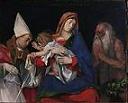

1507 On Apr. 27-Aug. the 4-mo. Siege of Cannanore by 40K Indian nayar and 20K Indian samorin forces from Calicut aided by Arabs results in another Portuguese V after their massive artillery firepower staves off infantry attacks, only to be slowly starved until a tidal wave washes a load of lobsters ashore on Aug. 15, and 11 ships under Tristao da Cunha arrives on Aug. 27 from Socotra, landing 300 soldiers to relieve the siege. In Apr. Vasili III of Russia invades Lithuania with two armies, starting the Third Russian-Lithuanian War (ends 1508); the Crimean khan defects to the Polish-Lithuanian side; marshal Michael (Mikhail) Lvovich Glinski (1470-1534) of Lithuania revolts and attempts to turn Vilnius to Russia, but is defeated. On Aug. 13 Dawit II (Wanag Segad = "to whom lions bow") (Lebna Dengel) (1501-40) becomes Solomonic emperor of Ethiopia (until Sept. 2, 1540), with Empress Mother Eleni as regent (until 1516), sending Armenian emissary Mateus (Matthew) the Armenian (-1520) to Portugal in 1514 to seek aid in fighting off the neighboring Muslim countries. On Oct. 10 Alfonso de Albuquerque and Tristan de Cunha capture Hormuz Island at the mouth of the Red Sea. In Dec. 11-y.-o. Mary Rose Tudor (1496-1533), younger sister of Henry VIII is betrothed to 7-y.-o. archduke Charles of Burgundy (b. 1500) (later HRE Charles V), but it is later dropped after political alliances shift; meanwhile Margaret of Austria is made regent of the Netherlands and guardian of her nephew Charles. The Genovese revolt is crushed by Louis XII of France. The Diet of Constance recognizes the unity of the Holy Roman Empire, and founds the Imperial Chamber. The Portuguese under Dom Francisco de Almeida ravage the Muslim port of Goa and other seaports on the Indian coast. After discovering Socotra Island in 1503, Portuguese navigator Diogo Fernandes Pereira discovers volcanic mountainous reefed Mauritius Island 500 mi. E of Madagascar, naming it Ilha do Dirne, but doesn't settle it; he also discovers the rest of the Mascarenhas Archipelago incl. Mauritius, Reunion, and Rodrigues, becoming the first Euro to sail E of Madagascar. After Safavid Shiite propaganda makes inroads among the Turcomans of E Anatolia and Iraq, causing the Turkish sultan to deport large numbers of them to the Peloponnesus, the Safavids under Shah Ismail I invade Kurdistan and take Diyarbakr, Baghdad and all of Iraq (1507-8); meanwhile the wild-card Uzbeks under Muhammad Shaybani occupy the Timurid S capital of Herat, then begin raiding the Kazakhs to the N. Future world shaker Martin Luther is ordained - watch them barkers and colored balloons, brothers? English Roman Catholic priest Thomas Wolsey (b. 1475) becomes Henry VII's royal chaplain, and after showing his caginess as a diplomat he becomes dean of Lincoln in 1509. Danish king Christian II begins hooking up with commoner Norwegian girl (of Dutch heritage) Dyveke (Dutch "little pigeon") Sigbritsdatter (-1517), who becomes his mistress; when he later marries a royal babe, she dies of a broken heart in 1517, helped by eating poisoned cherries. Italian humanist Polydore Vergil (1457-1555), who came to England in 1501 as deputy collector of Peter's Pence and became bishop of Bath and Wells in Oct. 1504 is appointed historiographer to Henry VII, who commissions him to write the history of England (finished 1533). Albrecht Durer returns to Nuremberg from Venice (until 1520). Vicente Yanez Pinzon and Diaz de Solis sail along the E coast of Central Am. Secular Hebrew studies are introduced in French and German univs. Architecture: Palazzo Strozzi in Florence (begun 1489) is finished. German sculptor Peter Vischer the Elder (1455-1529) designs the Renaissance-style Shrine of St. Sebaldus in St. Sebaldus Church (Sebalduskirche) in Nuremberg, with a Gothic canopy and a statuette of himself, becoming his masterpiece (finished 1519). The Church of Santa Maria di Loreto in Rome, designed by Antonio da Sangallo the Younger (1484-1546) is begun; they are still adding to it 75 years later. Science: Italian-born John Damian attempts to fly by strapping on chicken-feather wings and jumping from the walls of Stirling Castle in Scotland; too late he remembers that chickens don't fly. Orlando Galla of Venice improves the manufacture of glass mirrors. Nonfiction: Alvise Cadamosto, La Prima Navigazione per l'Oceano alle Terre de' Negri della Bassa Ethopia; the exploration of Gambia. The name "America" is first used by German cleric-cartographer Martin Waldseemueller (Waldseemüller) (1470-1520) of the Monastery of Saint-Die-des-Vosges in Lorraine, France in his Cosmographiae Introductio in honor of Amerigo Vespucci; it contains a world map titled Universalis Cosmographia incl. the first depiction of the Western Hemisphere, showing America as an island surrounded by water, and saying "It is fitting that this fourth part of the world, inasmuch as Americus discovered it, be called Amerige, or let us say, land of Americi, that is, America"; the depiction of a body of water to the W of America before the discovery of the Pacific Ocean remains a modern mystery; on Apr. 30, 2007 (500th anniv.) it is officially given to the U.S. by German chancellor Angela Merkel. Art: Il Giorgione (1477-1511) and Titian (1477-1576), Fondaco dei Tedeschi (Venice). Lorenzo Lotto (1480-1556), Madonna with Child and Four Saints (incl. St. Onuphrius). Il Perugino (1445-1523), Virgin Between St. Jerome and St. Francis. Raphael (1483-1520), Madonna di Casa Colonna. Births: Italian condottiero Ferrante I Gonzaga (Ferdinand de Gonzague) (d. 1557) on Jan. 28 in Mantua; 3rd son of Francesco II Gonzaga (1466-1519) and Isabella d'Este (1474-1539); brother of Federico II Gonzaga (1500-40); father of Cesar Gonzaga (-1575); uncle of Louis de Nevers (Gonzaga) (1539-95); pupil of Bernardino Baldi (1533-1617). Chinese Ming emperor #11 (1521-67) Jiajing ("admirable tranquility") (Zhu Houcong) (d. 1567) on Sept. 16; cousin of Zhengde; son of Zhu Youyuan, prince of Xing (1476-1519), 4th son of Changhua, and Lady Shao. French anatomist (prof. of anatomy at Montpellier) Guillaume Rondelet (Rondeletius) (d. 1566) on Sept. 27. German humanist educator (founder of the Gymnasium system) Johannes (Jean) Sturm (Ioannes Sturmius) (d. 1589) on Oct. 1 in Schleiden (near Cologne); does great things in Strasbourg beginning in 1537. Spanish gen. (under HRE Charles V and HRE Philip II) Fernando Alvarez de Toledo y Pimentel, "Iron Duke" of Alba (Alva) (d. 1582) on Oct. 27 - whose portrait bears a striking resemblance to British Prince Charles wearing a clown suit? English queen ("Anne of a thousand days") Anne Boleyn (Bullen) (d. 1536) (pr. BOO-len or buh-LIN); daughter of Sir Thomas Boleyn and Elizabeth Howard (daughter of the duke of Norfolk); 2nd wife of Henry VIII; mother of Elizabeth I. Russian metropolitan (one of the five Russian hierarchs) (St.) Philip II of Moscow (Feodor Stepanovich Kolychev) (d. 1569) in Galich (modern-day Kostroma Oblast); born into a noble boyar family; feast days: Jan. 9, July 3, and Oct. 5. French chancellor (1560-68) Michel de l'Hopital (d. 1573) near Aigueperse, Auvergne (Puy-de-Dome). Deaths: Italian St. Francis of Paola (b. 1416) on Apr. 2. Venetian painter Gentile Bellini (b. 1429). Florentine painter Cosmo di Lorenzo Filippi Rosselli (b. 1439). German geographer-navigator Martin Behaim of Nuremberg (b. 1459) on July 29 in Lisbon. Italian "The Prince" Renaissance condottiere Cesare Borgia (b. 1475) on Mar. 12 in Viana, Spain; his portrait ends up being used for Jesus Christ?




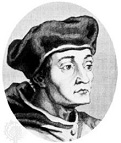





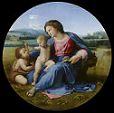



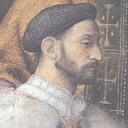
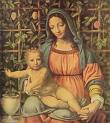
1508 On Mar. 18 Bavarian duke (since 1465) Albert IV (b. 1447) dies after winning the War of the Landshut Succession (begun 1503) and introducing primogeniture via edict in 1506, and his, er, eldest son William IV (1493-1550) becomes duke of Bavaria in Ingoldstadt (until Mar. 7, 1550), going on to become a leader of the Counter-Reformation; too bad, younger brother Louis X isn't happy with getting none, finagling his way into a share by 1516. In the spring Michelangelo yields to Pope Julius II's pleas and returns to Rome (by force?), giving up the Medici tomb he wanted to sculpt, then late in the year after learning how to paint frescoes begins painting the vaulted Ceiling of the Sistine Chapel (named after Pope Sixtus IV) for the Medicis (at the suggestion of Donato Bramante, who is jealous of him, and thinks he will refuse, break with the pope, or mess it up, either way causing him to leave Rome and let his relative Raphael become Rome's #1 painter?); it takes four years (until Nov. 1512), unassisted and grumbling all the way to paint 300 Biblical (all Jewish) figures and "ignudi" (nude youths) on 1K sq. yds. of plastered surface while lying curled up under the ceiling, writing a poem to a friend: "My stomach is thrust towards my chin,/ My beard curls up towards the sky,/ My head leans right over onto my back,/ My chest is like that of an old shrew./ The brush endlessly dripping onto my face/ Has coated it with a multi-colored paving./... I am as bent as a Syrian bow"; also, "I am neither working in a pleasant environment, nor am I a painter" (how degrading for a famous sculptor to have to do frescoes?); he refuses to camouflage the size and shape of the huge vaults, and instead uses painted tromp l'oeil (Fr. "trick of the eye") architecture to frame them; the paintings have Qabbalah messages, and there are two instances of ignudi flipping the fig at the pope? In Mar. the Battle of Chaul Harbor in India is a decisive Mamluk and Indian V over the Portugese under Lourenco de Almeida, becoming their first D in the Indian Ocean; Almeida dies during the sinking of his ship at the harbor entrance. On Apr. 10 Guidobaldo I da Montefeltro (b. 1472) dies without an heir, and after Pope Julius II (his other uncle) pulls strings, his nephew Francesco Maria I della Rovere (1490-1538) becomes duke of Urbino (until 1538), going on to work to recover Senigallia from the Borgias. On Oct. 8 after Michael Glinski is defeated at Minsk and Orsha, and the Polish-Lithuanian army forces the Russians to retreat, Tsar Vasili III signs an Eternal Peace Treaty with Lithuania, rolling the territorial boundaries back to 1503. On Dec. 22 Rene II (b. 1451) dies, and his son Antoine the Good (1489-1544) becomes duke of Lorraine (until 1544), going on to back the Counter-Reformation and quelch several popular revolts. Russia and Sweden sign a 60-Year Peace Treaty. The League of Cambrai is formed by Margaret of Austria, the Cardinal of Rouen (France), and Ferdinand II of Aragon (Spain) to divide the Italian possessions of long overripe Venice - you believe in Santa Claus don't you? German king (since 1493) Maximilian I (1459-1519) assumes the title of elected HRE without being crowned by Pope Julius II (between choir boys) after he confirms the fact that from now on the German king automatically becomes HRE without needing the papal formality. The Portuguese under Francisco da Alameda defeat the kingdom of Calicut in a sea battle. The Portuguese occupy Muscat, Oman (until 1648), building it up and fortifying it to protect their sea lanes to/from India. The Uzbeks under Muhammad Shaybani take Khurasan from the timid Timurids under Babar, and raid the Kazakhs. Sebastian (Sebastián) de Ocampo travels clear around Cuba, proving that it's an island. Castilian Conuistador Juan Ponce de Leon (1460-1521) begins the conquest of Puerto Rico (until 1512), founding the first settlement of Caparra next year, getting named gov. in 1509 (until 1512), and going on to discover gold and force the Taino Indians to work the mines, where they die like flies while he grows rich. Juan de Esquivel Barahona (1480-1519) settles Jamaica. The first sugar mills are established on Santo Domingo, which organizes enslavement expeditions to nearby islands. Jakob Fugger is created a hereditary knight of the Holy Roman Empire - Sir Fugger? His mother's called what? Pope Julius assigns Michelangelo-wannabe Raphael to paint a series of frescoes in the new exclusive Papal Apts. in the 3rd (top) floor of the Apostolic (Vatican) Palace in Rome (used for admin. purposes only until 1870, the papal residence being the Quirinal Palace); he works on them until 1517, while Michelangelo works in the bigger Sistine Chapel. Il Sodoma goes to Rome (until 1515) and paints frescoes in the Camera della Segnatura in the Vatican (where the pope signs acts of grace); too bad, most of them are later repainted by Raphael (1483-1520), who throws him a bone by painting his portrait beside his own in his "School of Athens" on one of the walls - it's not amica, it's how you're treated? The Latin term "encyclopedia" is coined from the Greek "enkyklios paideia", meaning "in a circle" plus "education". Desiderius Erasmus of Rotterdam confuses the vase or jar of Pandora with a box, creating a confusion that lasts till modern times - clean freak? Italian Venetian humanist (later cardinal) Girolamo (Hieronymous) (Jerome) Aleandro (Aleander) (1480-1542) begins teaching Greek at the U. of Paris, then becomes Vatican librarian in 1519, later heading the opposition to Martin Luther at the Diet of Worms. Martin Luther becomes a student at the U. of Wittenberg - no spring break at Ft. Lauderdale for you, brother? Walter Chapman and Andrew Myllar establish the first press in Scotland in Edinburgh; their first pub. is Bishop William Elphinstone's Aberdeen Breviary (1509-10), Scotland's first liturgy. Architecture: Althorp Manor in Northamptonshire, England is acquired by Sir John Spencer (1455-1522), going on to remain in possession of the Spencer family until modern times. Siena-born Italian architect-painter Baldassare Peruzzi (1481-1536) begins building the Renaissance-style Villa Farnesina in Rome (finished in 1511). Nonfiction: Guillaume Bude (1467-1540), Notes on the 24 Books of Pandects (Annotationes in XXIV. libros Pandectarum) (posth.); uses philology and history to throw light on the study of Roman law. Johannes Trithemius (1462-1516), The Seven Secondary Intelligences (De Septem Secundeis id est Intelligentiis); history of the world based on astrology. Art: Albrecht Durer (1471-1528), Praying Hands; Madonna with the Iris; at least a lot of German babes are really blonde? Giorgione (1477-1510), Sleeping Venus. Lorenzo Lotto (1480-1556), Sacra Conversazione; Madonna and Child with St. Dominic, St. Gregory and St. Urban; Portrait of a Young Man in Black in Front of a White Cloth. Bernardino Luini (1475-1532), Madonna del Roseto (Madonna with a Rose Garden); paints her with slightly squinted eyes, which Vladimir Nabokov later calls "Luinesque". Raphael (1483-1520), The Alba Madonna. Leonardo da Vinci (1452-1519), Anatomical Drawing of a Female; an unflattering drawing attempting to illustrate the circulatory and other systems, but only displaying his ignorance of women's private parts and his own homosexual proclivities? Plays: Ludovico Ariosto (1474-1533), Cassaria (comedy). Poetry: Robert Henryson (Henrysoun) (-1507), The Moral Fables of Aesop the Phrygian; "Although the nut's shell is hard and tough, it holds the delightful kernel. So there lies a wise and fruitful teaching underneath an imaginary fable. And learned men say it is very profitable to mingle merry sport with earnest matters, to lighten the spirit and speed the time." Novels: Conradus Celtis (-1459), The Maying or Disport of Chaucer (posth.); first book printed in Scotland? Garcia Ordonez de Montalvo, Amadis de Gaula (Gaul); rev. of a 14th cent. romance about a knight who loves Princess Oriana, becoming the #1 novel of chivalry, spawning many imitators incl. Miguel Cervantes. Births: Indian Mughal (Mogul) emperor #2 (1530-40) Humayun (Nasir ud-din Muhammad Humayun) (d. 1556) on Mar. 7 (Old Style) in Kabul; son of Babur (1483-1531); father of Akbar the Great (1542-1605). French Pleiade poet and classical scholar ("the Modern Pindar") Jean Dorat (Daurat) (Joan Dinemandy) (d. 1588) on Apr. 3 in Limoges; teacher of Jean-Antoine de Baif (1532-89). Italian #1 architect (founder of the Palladian style) Andrea Palladio (Andrea di Pietro della Gondola) (d. 1580) on Nov. 30 in Padua, Venice; moves to Vicenza at age 13. Flemish cartographer Regnier (Reiner) Gemma Frisius (d. 1555) on Dec. 9 in Dokkum, Friesland; educated at the U. of Leuven. English queen (1536-7) Jane Seymour (d. 1537); daughter of Sir John Seymour (1474-1536) and Margery Wentworth (1478-1550); brother of Edward Seymour (1506-52) and Thomas Seymour (1508-49). English lord high adm. Thomas Seymour, 1st Baron Seymour of Sudeley (d. 1549); son of Sir John Seymour (1474-1536) and Margery Wentworth (1478-1550); brother of Edward Seymour (1506-52) and Jane Seymour (1509-37); husband (1547-8) of Catherine Parr (1512-48). Spanish explorer Juan de Salazar de Espinoza (Emiliano Gomez Suarez) (d. 1560) in Espinosa de los Monteros. Croatian ban (1542-56) Nikola Subic Zrinski (d. 1566) in Zrin. Deaths: Jewish statesman-theologian Isaac Abravanel (b. 1437). Bavarian duke (1465-1508) Albert IV (b. 1447) on Mar. 18 in Munich. French duke of Lorraine (1483-1508) Rene II (b. 1451) on Dec. 10 in Fains. Italian duke Ludovico Sforza ("Il Moro") of Milan (b. 1452) on May 27 in Loches Castle, France (POW). German humanist scholar-poet Conradus Celtis (b. 1459) on Feb. 4 in Vienna. German sculptor Adam Kraft (b. 1460); designed the Gothic tabernacle of Nuremberg's Church of St. Lawrence. Italian duke of Urbino (1482-1508) Guidobaldo I da Montefeltro (b. 1472) on Apr. 10 in Fossombrone (pellagra).






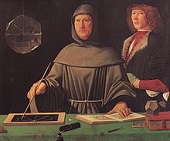

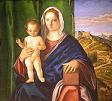
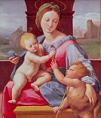


1509 On Feb. 2 after an Indian king who had paid tribute to Vasco de Gama in 1506 refuses to pay tribute to Dom Francisco de Almeida (1450-1510) (father of Lourenco de Almeida) the Portuguese win the Battle of Diu (Second Battle of Chaul Harbor) in the Arabian Sea off Diu, India against Indian forces allied with Egyptian Mamluks, wiping out their fleet and establishing Portuguese control over the spice trade; too bad, Ferdinand Magellan, who participates in the battle takes leave without permission, and falls out of favor with Almeida for trading illegally with the Moors, causing him to become unemployed until 1515. The second Cannae, or, Darling you gotta let me know, should I stay or should I go? HRE Maximilian I joins the League of Cambrai and sieges but fails to capture Padua from Venice, even though his troops hold it for a few weeks; Jakob Fugger lends him 170K ducats to finance his (fuggin'?) war against Venice; Pope Julius II della Rovere, "Papa de Terribile" joins the League of Cambrai and excommunicates Venice on Apr. 27; France declares war on Venice, and on May 14 the French defeat the Venetians at the Battle of Agnadello, making the Venetian Empire kaput; the Jewish-controlled Venetians now begin subverting England? In the spring Bogdan III of Moldavia invades Poland, and is severely defeated on Oct. 4 at the Battle of the Dniester River. On Apr. 21 (night) English king (since Aug. 22, 1485) Henry VII (b. 1457) dies rich in bed in Richmond Palace, and his athletic 6'2" 2nd son Henry VIII (1491-1547) becomes the 40th monarch of England and the 2nd Tudor king (until Jan. 28, 1547); favorite horse: Canicida; since he has no son, his brother-in-law James IV of Scotland is named his heir, which doesn't set well with the English; on June 11, claiming it was his dead father's wish, and ignoring politicians on both sides who dispute her claim to being a virgin, he marries Catherine of Aragon (1485-1536), daughter of Ferdinand II after Pope Julius II okays it and issues a dispensation for the marriage; the lovely torture instrument called the rack is first commonly used in his reign? - it's all done with hidden ketchup and mayo packages? On Aug. 22 an earthquake in the Sea of Marmara followed by several weeks of aftershocks destroys Constantinople, followed by 66 more shocks between 1711-1894 - just when they begin copying Christian architecture? The Spanish under Francisco Jimenez de Cisneros capture Oran in North Africa. Portuguese-speaking aborigine Nzinga Mbemba (Mvemba a Nzinga) (1456-1543) becomes king Alfonso I of the Kingdom of Kongo in Congo, Cabinda, and N Angola, with capital at M'banza-Kongo, and sets about trying to Christianize the kingdom; too bad, in the long run his efforts fail - other than to sweeten the pot? Concerned about their growing power, the Safavids under Shah Ismail I invade Transoxiana to take on Muhammad Shaybani (ends 1610). Alfonso de Albuquerque becomes gov. of Portuguese India (until 1515). Nicolas de Ovando is replaced as gov. of Hispaniola (since 1502) by King Ferdinand with Diego Columbus after he makes a promise to Queen Isabella on her deathbead; Ovando is allowed to keep his property. Diego de Nicuesa founds the colony of Castilla de Oro on the Gulf of Uraba (Panama), extending to the Belen River. A Jewish persecution begins in Germany; converted Jew Johannes Pfefferkorn (1469-1524) receives authority from Maximilian I to confiscate and destroy all Jewish books in Germany, despite the opposition of humanist Johann Reuchlin (1455-1522). After Henry VII's death, Thomas Moore reenters public life, and is appointed under-sheriff of London next year. Vicente Yanez Pinzon and Diaz de Solis sail along the SE coast of South Am. Brasenose College (Ger. "Brassenhuss" = brewhouse) at Oxford U. is founded by lawyer Sir Richard Sutton (-1524) and Lincoln bishop (1496-) William Smyth (Smith) (1460-1514) on the site of a brewery, becoming the last of the pre-Reformation colleges; future students incl. author Richard Burton, antiquarian Elias Ashmole, and John Foxe. The first attempt to license medical doctors is made in Europe. Inventions: Wallpaper is invented as a substitute for tapestry. Nonfiction: Anon., Fortunate and His Sons (Augsburg); German book of Schwank stories. John Fisher (1469-1535), The Seven Penitential Psalms (London). Luca di Pacioli (1445-1517), De Divina Proportione (On the Divine Proportion); composed in 1498 in Milan; study of the golden ratio; illustrations by his math student Leonardo da Vinci, becoming the first skeletonic solids permitting an easily distinction between front and back, incl. the first printed illustration of a rhombicuboctahedron; the Metropolitan Museum of Modern Art in New York City later takes their M logo from it. Art: Fra Bartolommeo (1472-1517), The Rest on the Flight Into Egypt with St. John the Baptist; the J. Paul Getty Museum in Los Angeles, Calif. pays $22M for it. Giovanni Bellini (1430-1516), Madonna and Child. Albrecht Durer (1471-1528), Small Passion (1509-10) (37 woodcuts); incl. Christ Appearing to the Magdalen, showing him wearing a brimmed pirate-style hat and carrying a shovel with her kneeling before him. Ridolfo Ghirlandaio (1449-94), Portrait of a Lady. Il Giorgione (1477-1510), Knight of Malta. Raphael (1483-1520), The Aldobrandini (Garvagh) Madonna (1509-10). Andrea del Sarto (1486-1531), Miracles of St. Philip. Leonardo da Vinci (1452-1519), The Virgin and Child with St. Anne (1509-10) (1503?). Births: Spanish Dominican theologian-bishop Melchior Cano (d. 1560) on Jan. 1 in Tarancon, Cuenca. Italian cardinal (1538-) Ippolito II d'Este (d. 1572) on Aug. 25 in Ferrara; son of Duke Alonso I d'Este and Lucrezia Borgia; brother of Duke Ercole II d'Este; named after his uncle. French "if you're happy don't clap your hands" Protestant predestinarian religious reformer (founder of the Presbyterian Church) John Calvin (Jean Chauvin) (Cauvin) (Caulvin) (d. 1564) in Noyon, Picardy; lives in Switzerland - the original chauvinist? Dutch Anabaptist leader John of Leiden (Leyden) (d. 1536) in Leiden; illegitimate son of a Dutch mayor; starts out as a tailor's apprentice. Spanish (Basque) conquistador Domingo Martinez de Irala (d. 1556) in Bergara, Guipuzcoa. Italian Mannerist painter-sculptor Daniele Ricciarelli da Volterra (d. 1566) in Volterra, Tuscany; known for his portrait of his boss Michelango, and being hired in 1565 to paint fig leaves on the genitals of Michelangelo's "The Last Judgment" (1541), gaining him the nickname "Il Braghettone" (the Breeches Maker). Italian humanist physician-scholar-mathematician Federico Commandino (d. 1575) in Urbino; tr. of Euclid, Archimedes, Aristarchus of Samos, and Pappus of Alexandria; teacher of Guidobaldo del Monte (1545-1607). French marshal (1570-) (Roman Catholic) Gaspard de Saulx, Sieur de Tavannes (d. 1509) in Dijon. Spanish conquistador Gonzalo Jimenez de Quesada (d. 1579) (b. 1496?) (b. 1506?) in Cordoba. Italian goldsmith-sculptor Leone Leoni (d. 1590). Italian Renaissance anti-Aristotelian philosopher-scientist ("First of the Moderns") Bernardino Telesio (d. 1588) in Cosenza, Calabria; teacher of Franciscus Patricius (1529-97). Deaths: French writer Philippe de Commines (b. 1445). Italian architect Simone de Cronaca (b. 1454). English king (1485-1509) Henry VII (b. 1457) on Apr. 21 in Richmond Palace. Nuremberg sculptor Adam Krafft (b. 1460).